Ponds are a vital part of every landscape, even small simple backyard or garden ponds can add vital resources for enjoyment and functionality. Ponds can be a place for dragonfly larvae, fish,frogs, toads, snakes, and many others as well. Managing a pond properly will determine how well it serves you. When planned well ponds need little ongoing management, and the size and purpose of the pond will ultimately determine how much daily maintenance is required.
This account starts in 2017 and runs through 2021. It is located in the main gully on the property and is slightly higher in elevation than the house site . The exact amount of run off water flow in rain storms is unknown, but the ponds already established below this one had lots more water than they could handle, so this location for a pond promised to eliminate most erosion and possibly become a reliable water source. The brush pile (upper center of the picture) is just beyond where the dam will be)
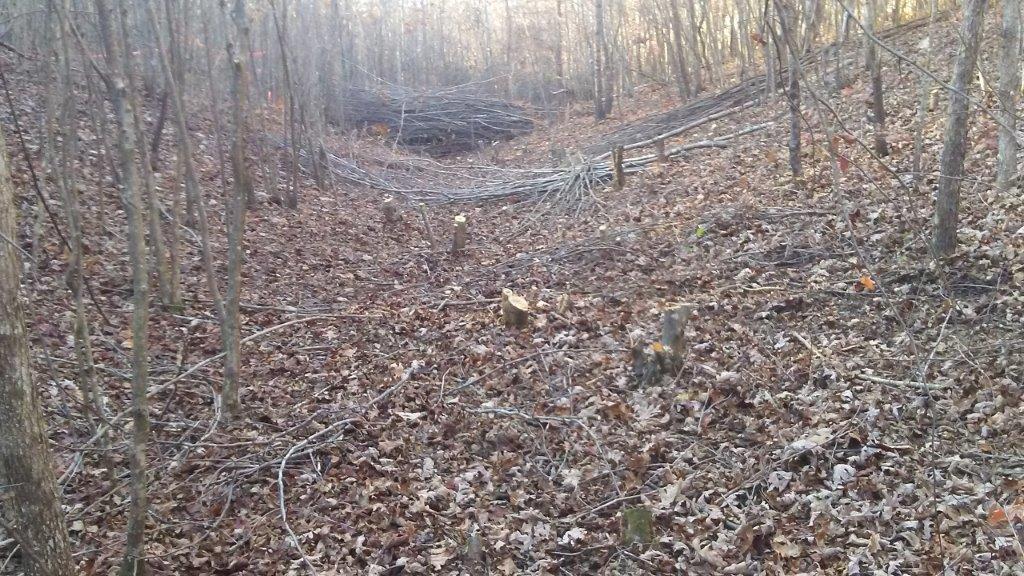
The thick undergrowth was a challenge and took lots of time for my small machine. I justified cutting these small saplings with the idea that in the long run a pond would stop erosion more effectively and the increased water in the surrounding soil would tremendously improve the overall fertility of the area.
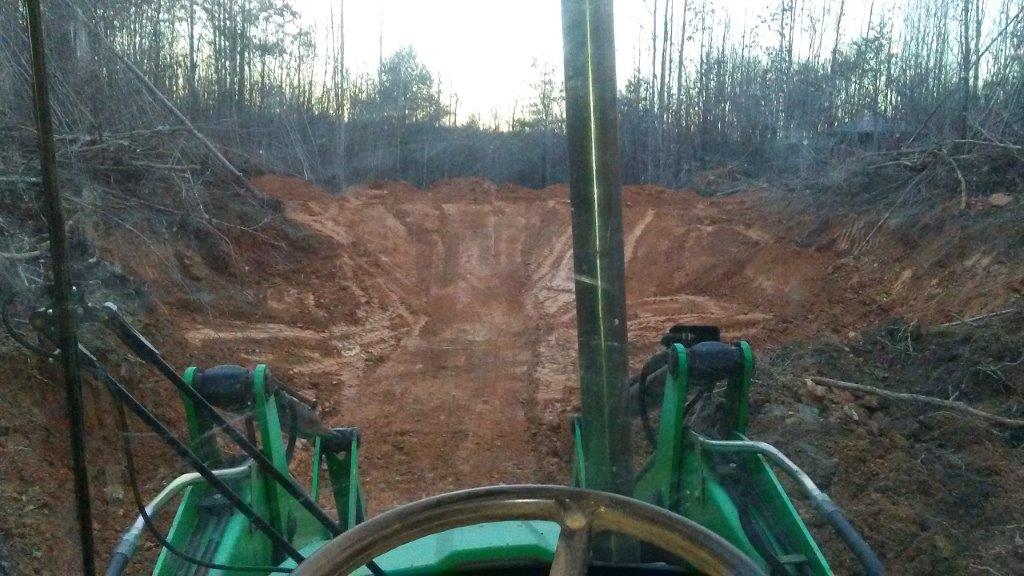
The keyway anchors the dam in the landscape, topsoil is scraped away and digging out a slot on both ends and under the core of the dam is critical
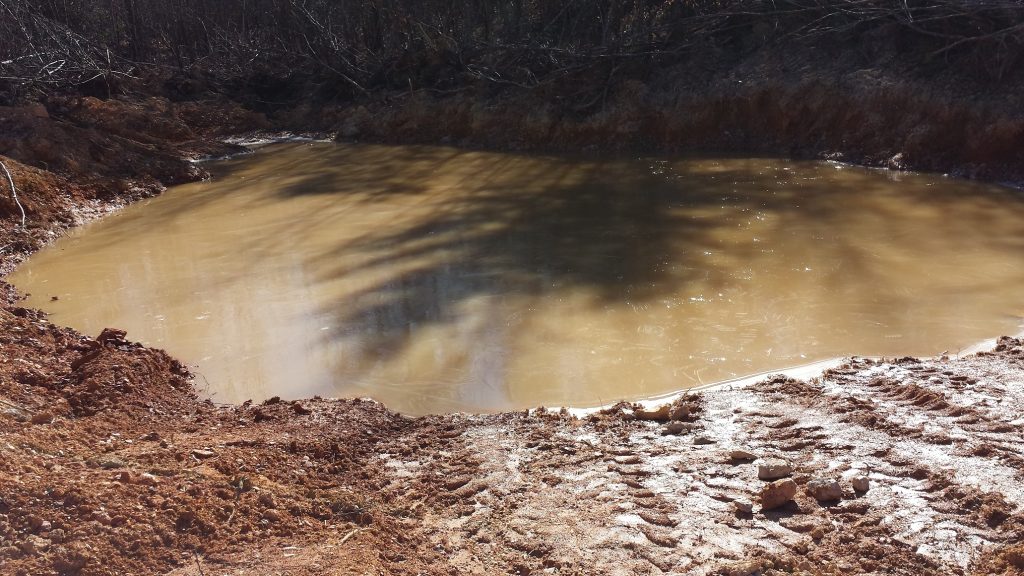
As this first part was done with a rented backhoe, and other projects demanded attention, the first phase came to an end with a relatively small pond and a very small dam, further phases of the construction would come later. Any advice I would give to myself in retrospect would be to hire the biggest machine possible and do the job all at once. This piecemeal construction led to numerous washouts and rebuilds while waiting for money and time to get the dam up to proper height and establishing a reliable spillway.
I also learned that to a large extent these gully dams require lots of premium clay soils(30-40%) and just because the size of the hole might have enough volume, the actual useful soil is not guaranteed.
As it ended up, the size of the excavation had to expand beyond the original plans . What is shown above actually became a central “deep spot” and in dry times it is the area that does not dry out.
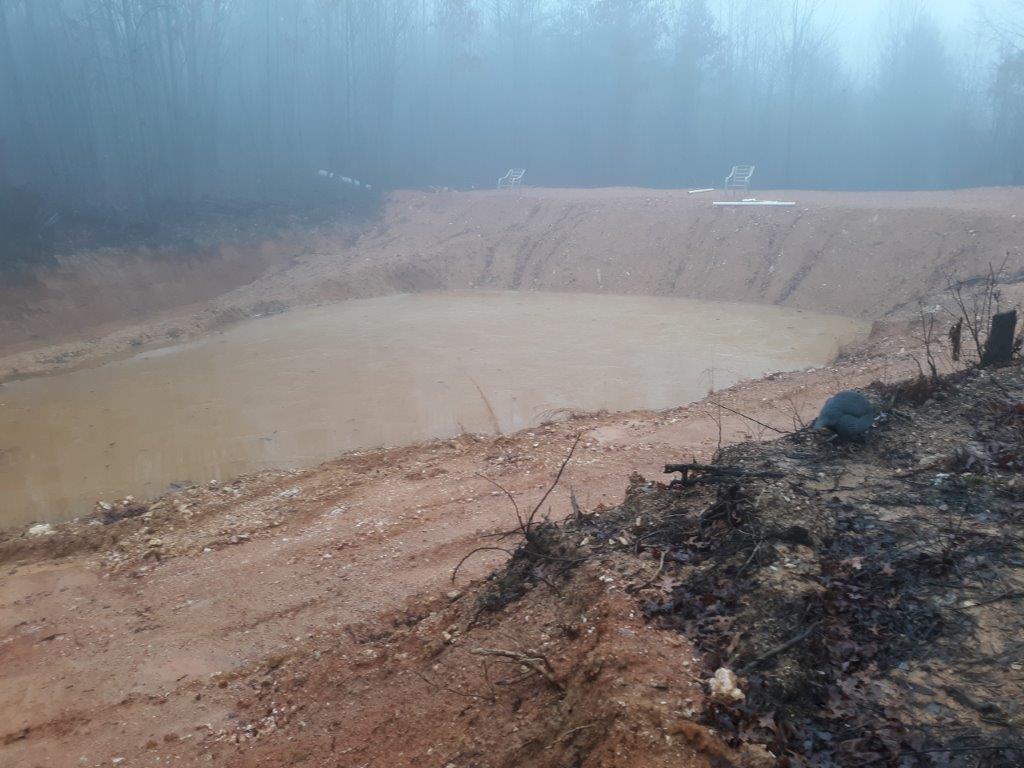
This is a more recent shot of the overall excavation, note the wider cuts on the sides to supply extra clay, the back part of the pond also had more clay excavated in an effort to widen the dam wall. I’m currently monitoring the water level and if/when the pond dries out to this level I will be in there manicuring the sides and back some more and adding whatever clay I salvage to the dam wall to widen it.
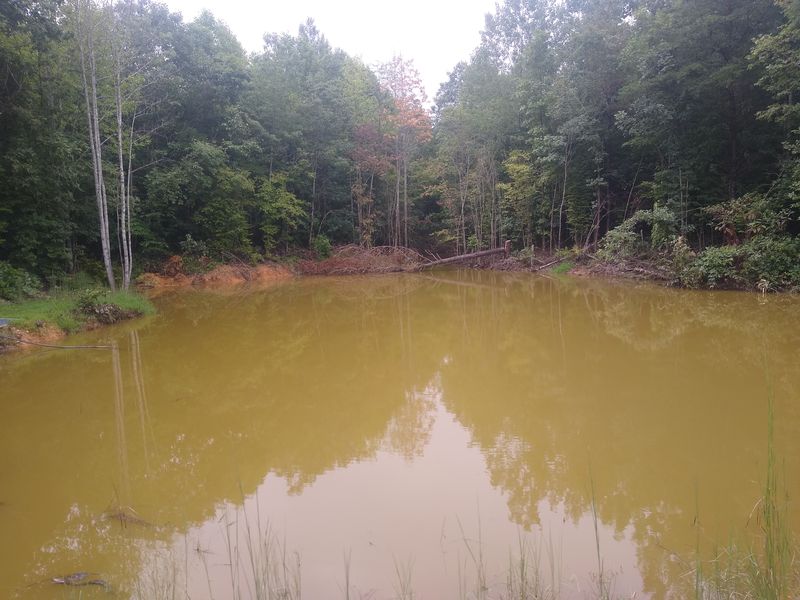
An 18 inch rain fell in about 4 hrs one evening and the pond filled to overflowing. As muddy as the water is, that is simply a demonstration of how effective the dam is at capturing soil that would have at least gone downstream, possibly even all the way to the river
The structure of the spillway was completed so there was no problem with the overflow injuring the dam. This was a nice change from dreading heavy rains that overflowed and washed away large amounts of the precious clay I had worked so hard to find during construction. Other dams lower in the gully meant the clay at least stayed on the property, but that didn’t change all the extra work I spent repairing the breaches and finding replacement clay..
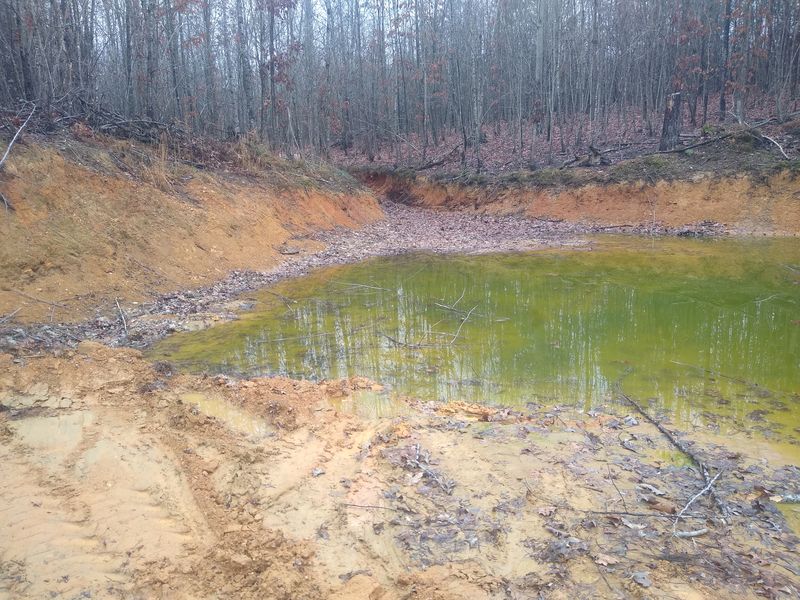
Towards December the same pond was almost back to the size of the original smaller one. It was still too muddy to get the machine in there, and future enlargements will probably need to be done from the ramps or the banks TWT
I will end this pond bio here and gather all the newer photos to continue the pond/erosion control saga in a future post.
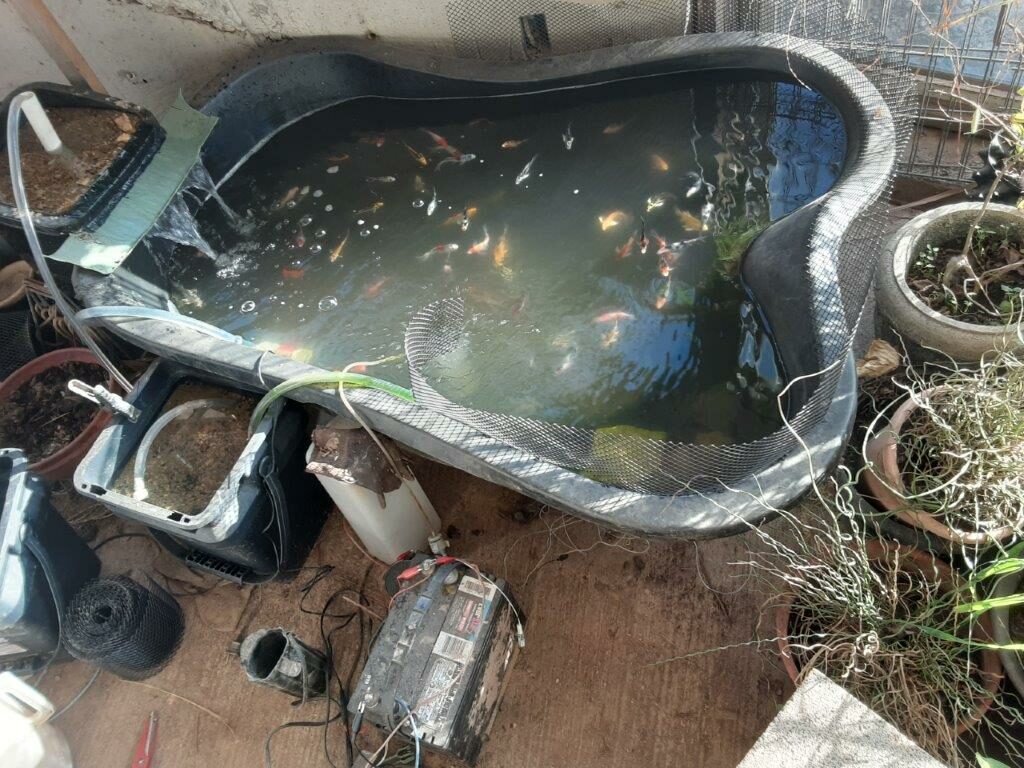
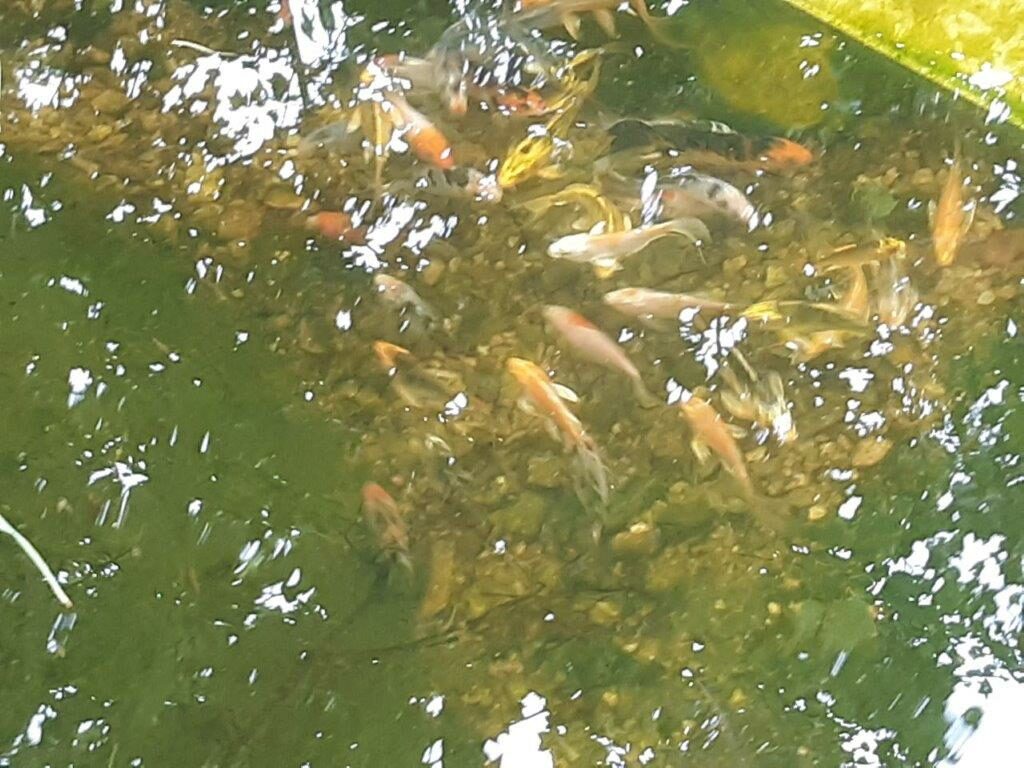
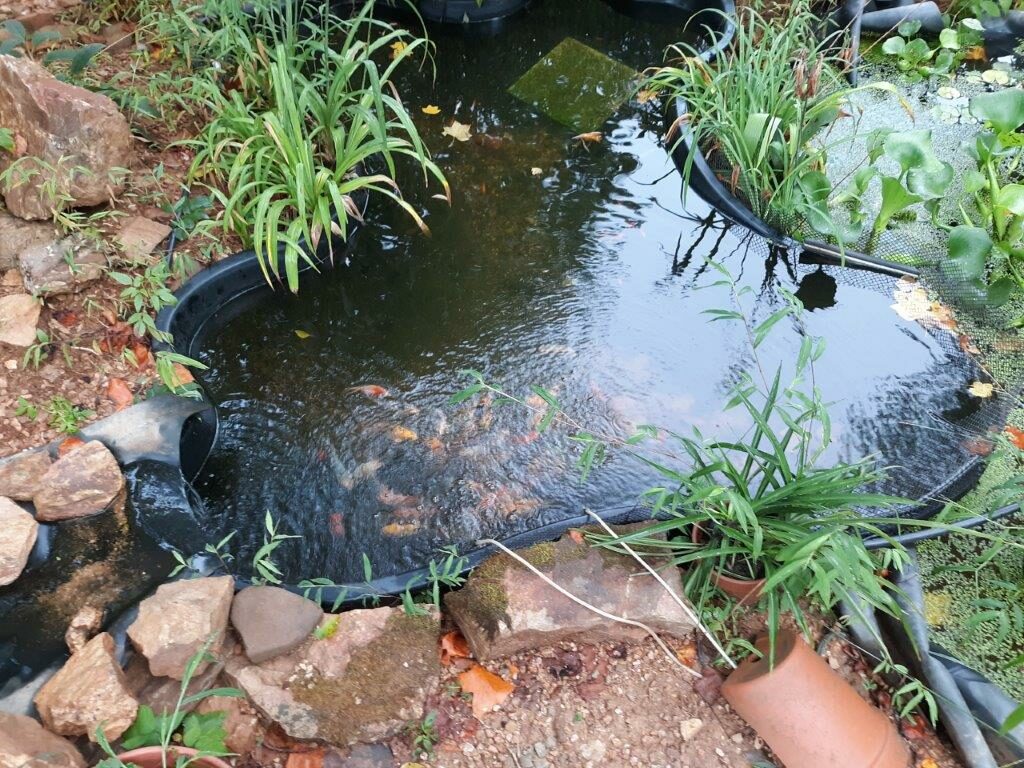
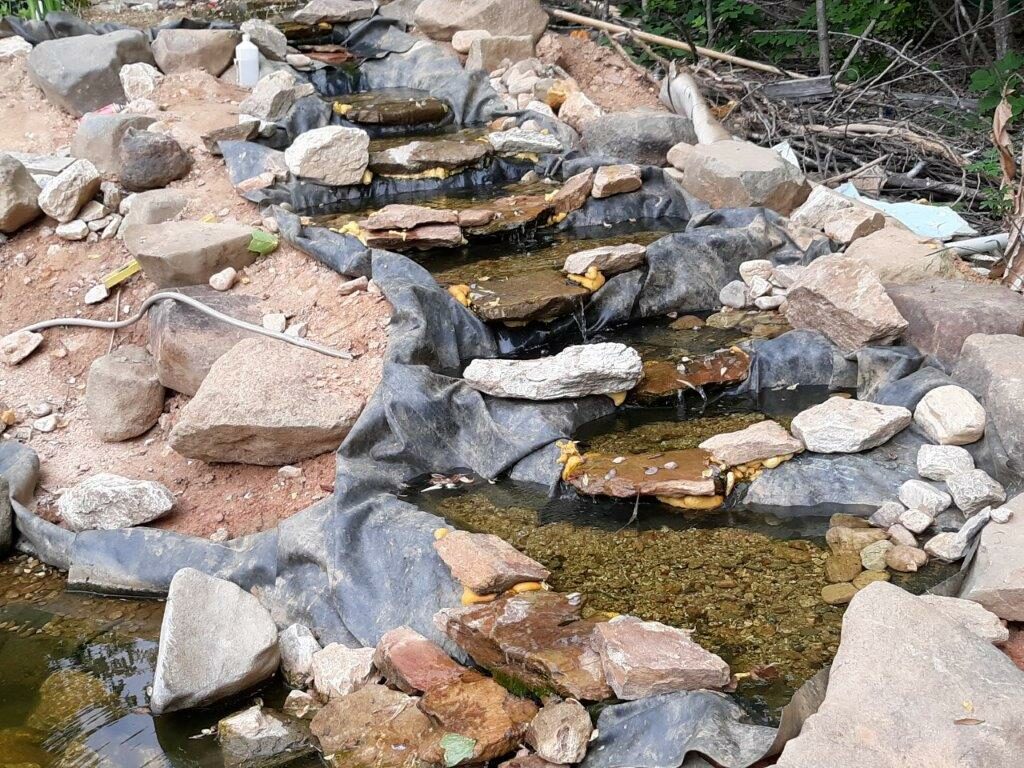
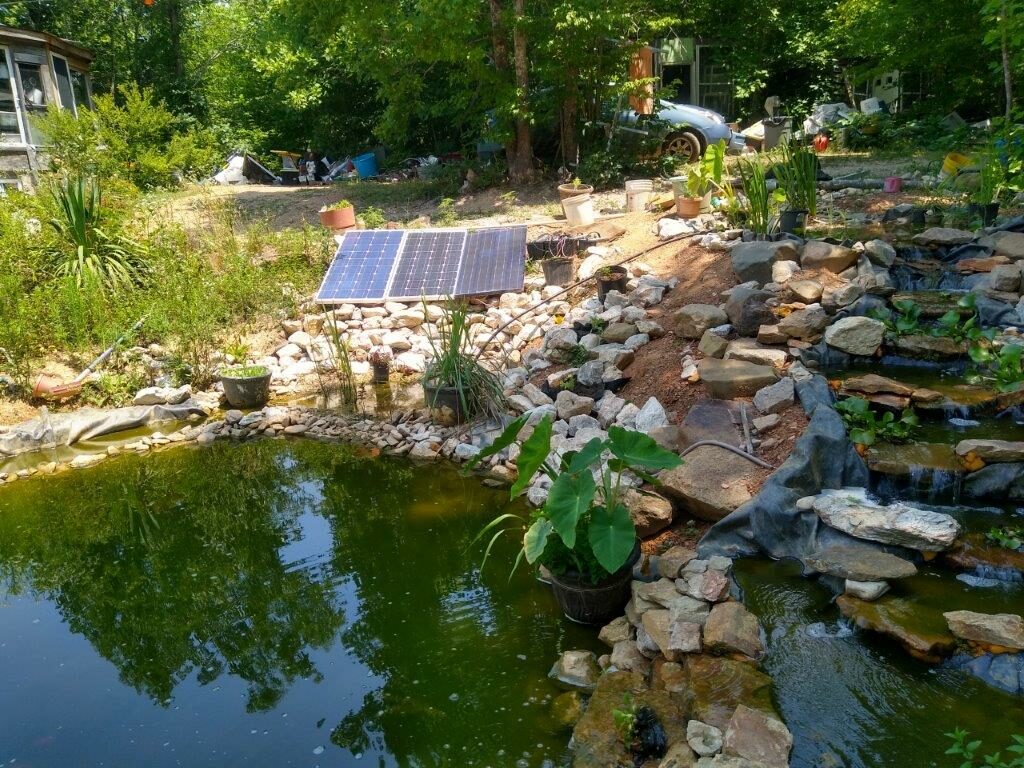
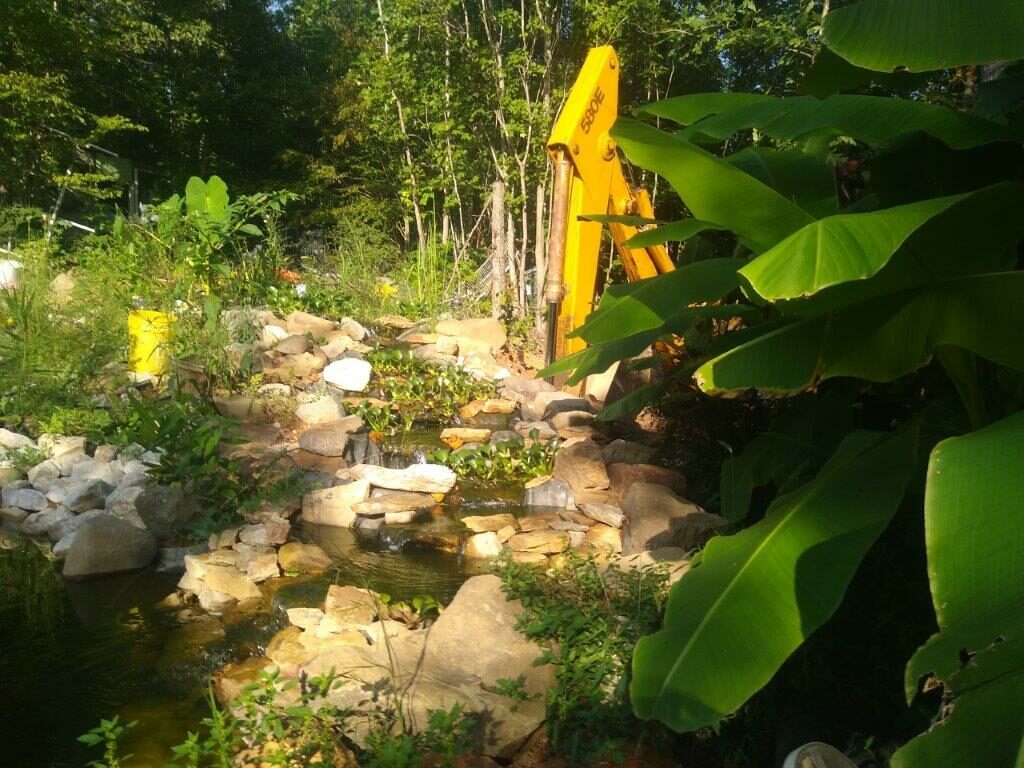
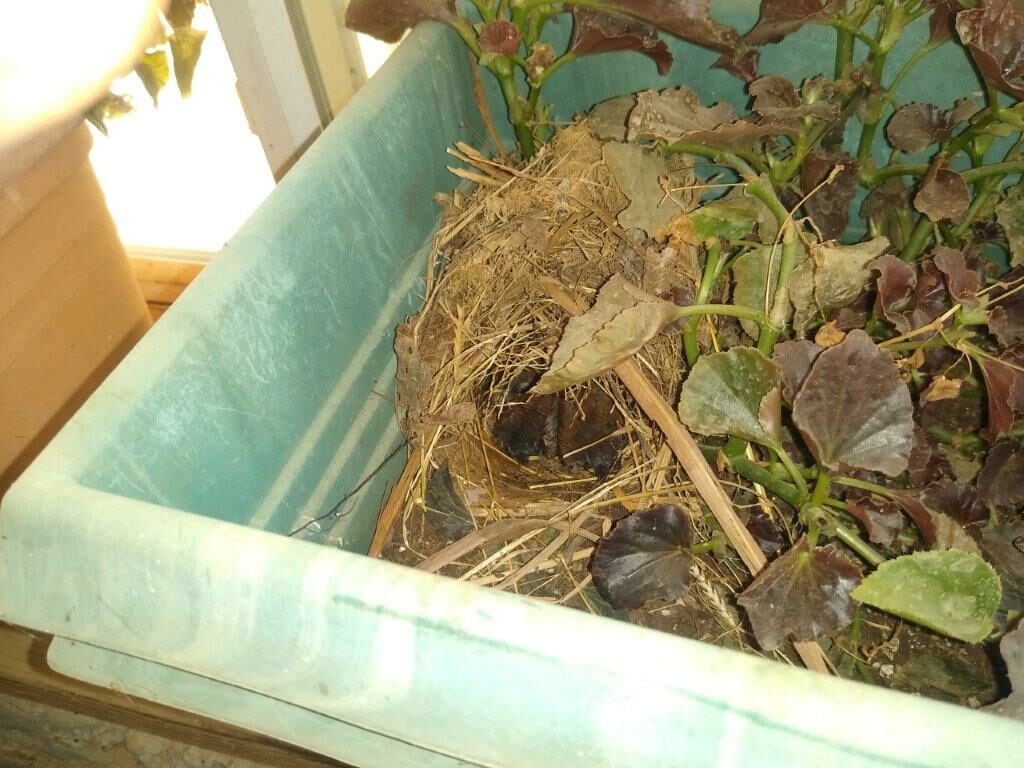
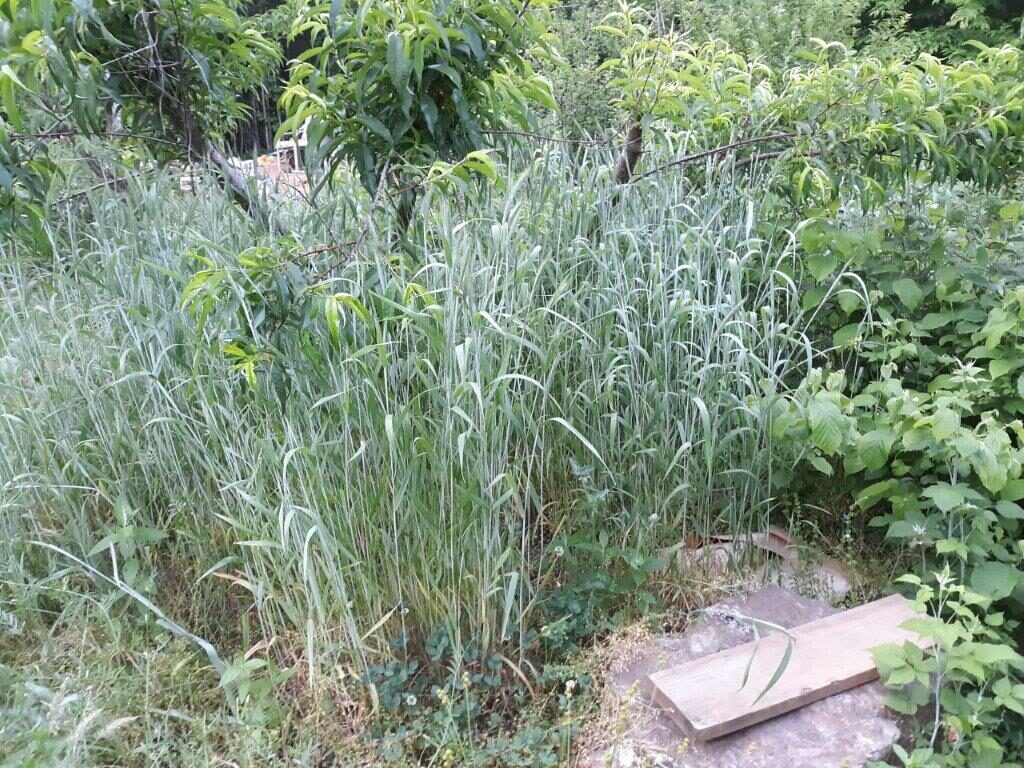
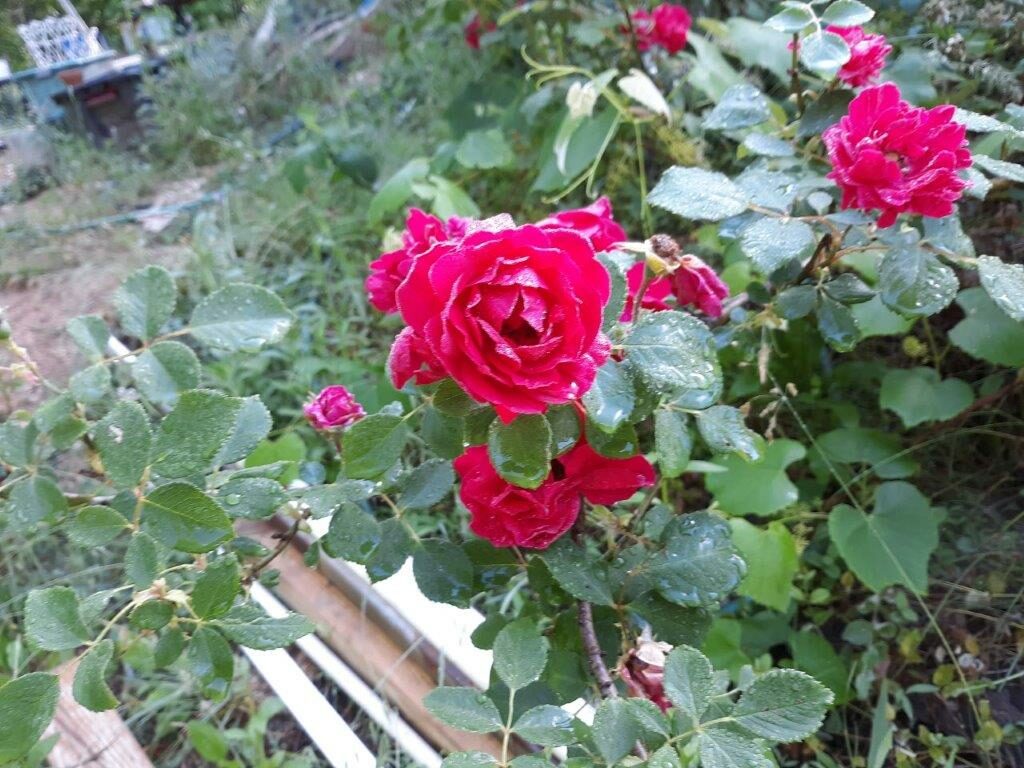
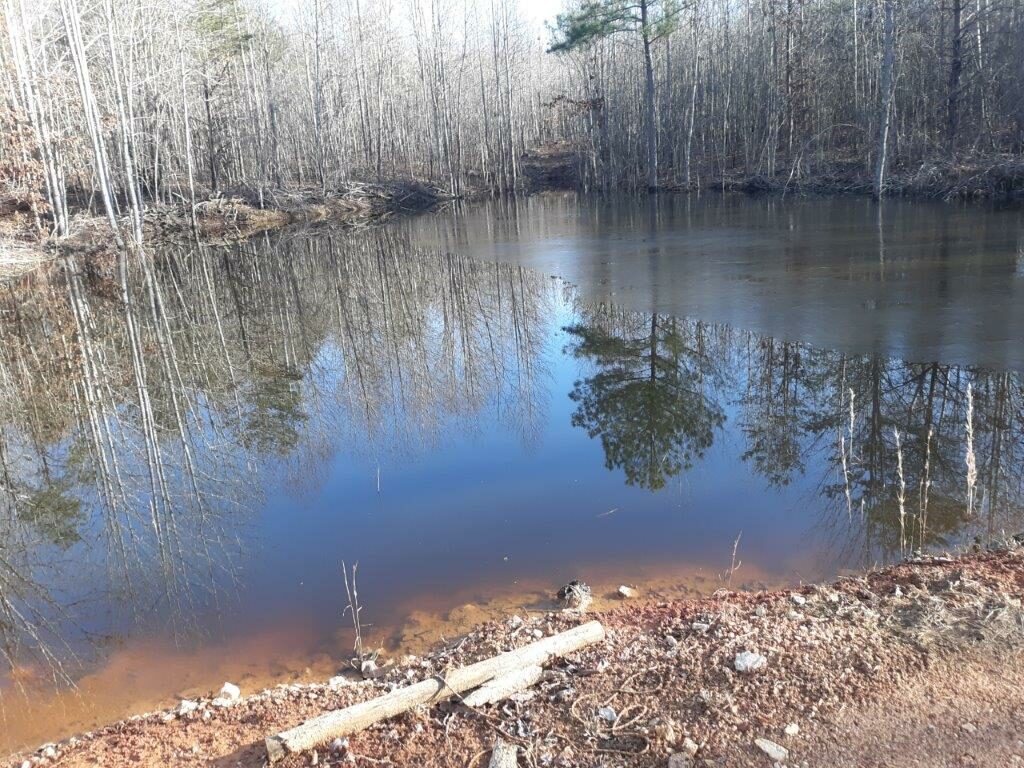
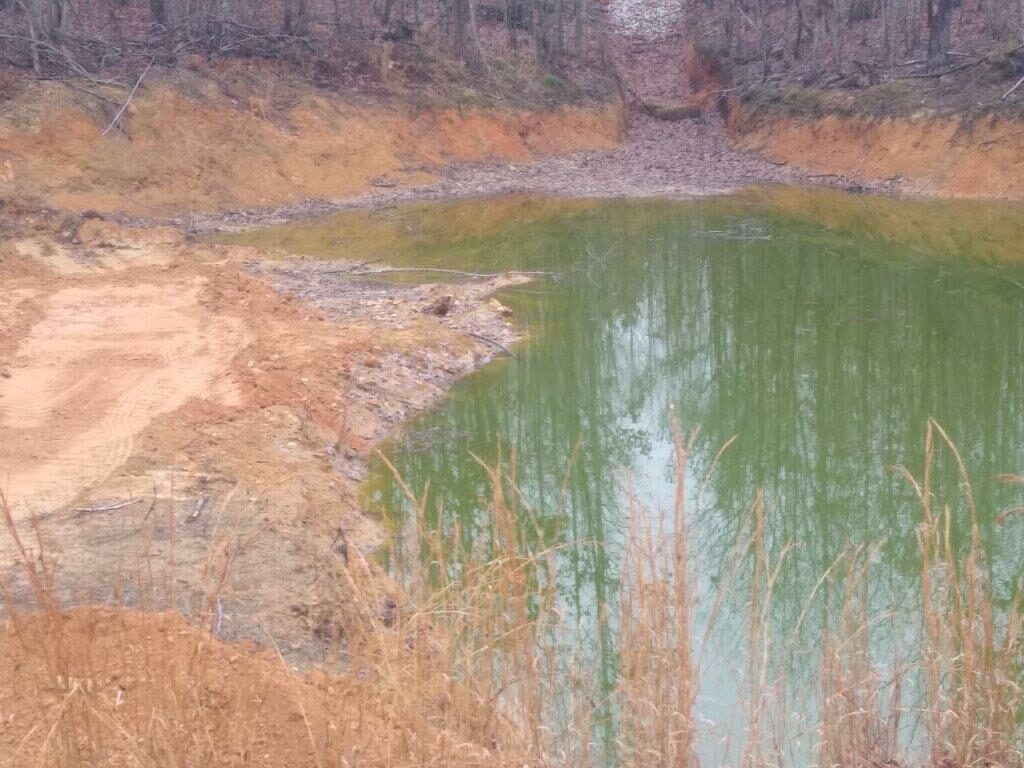
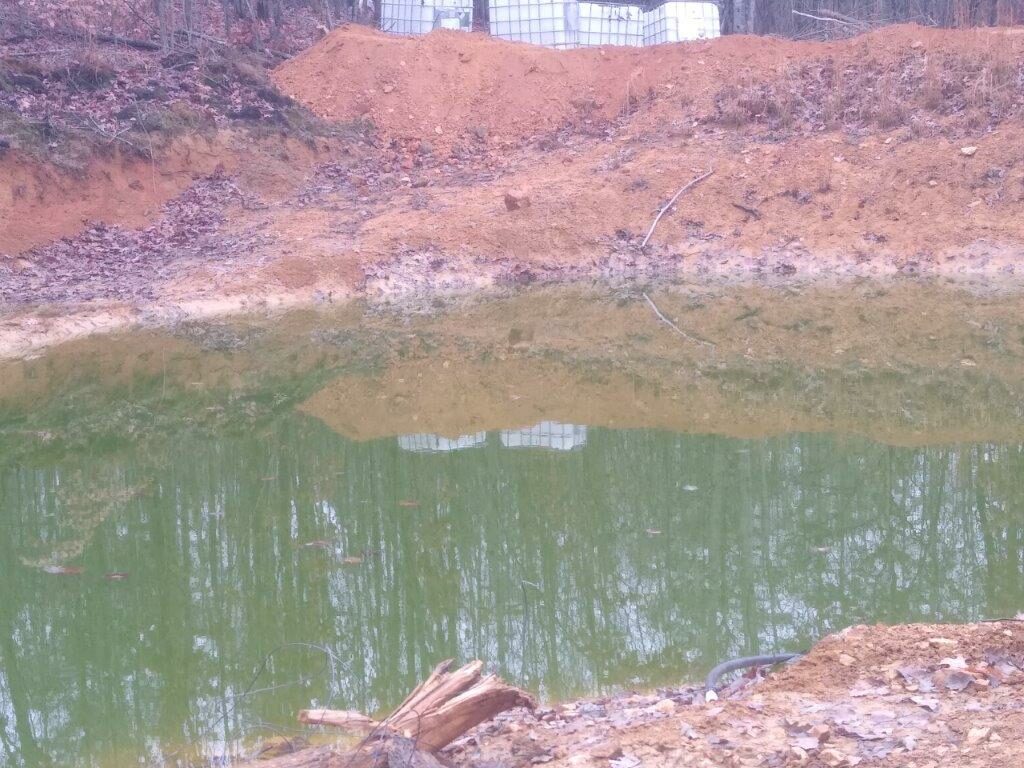
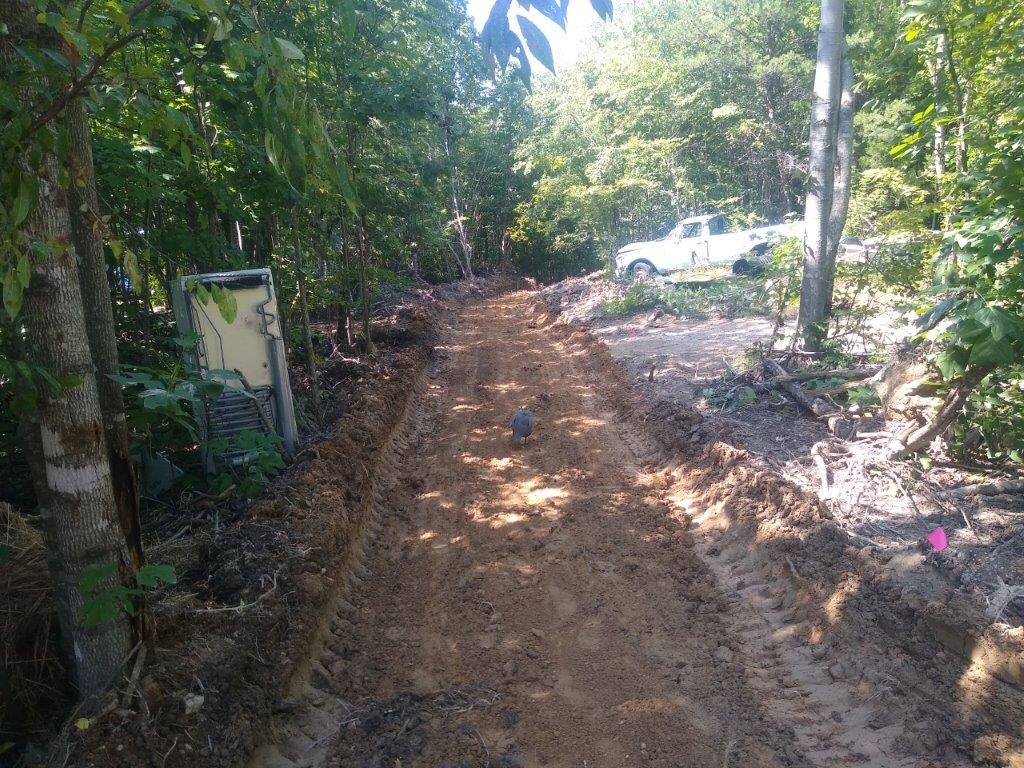
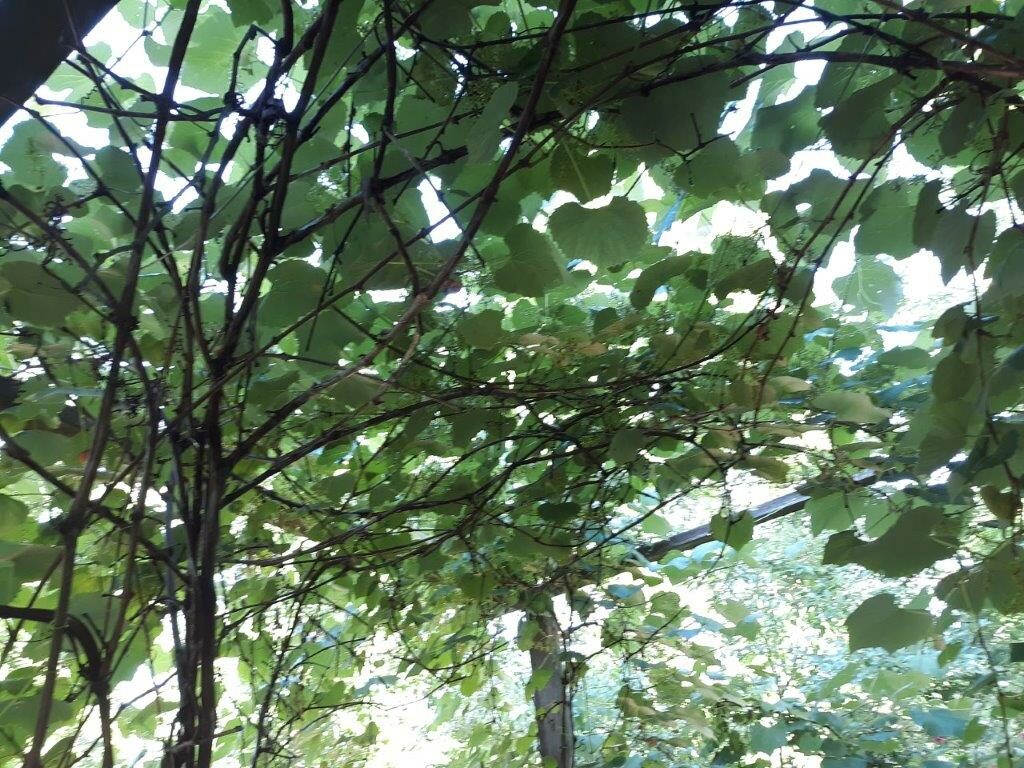
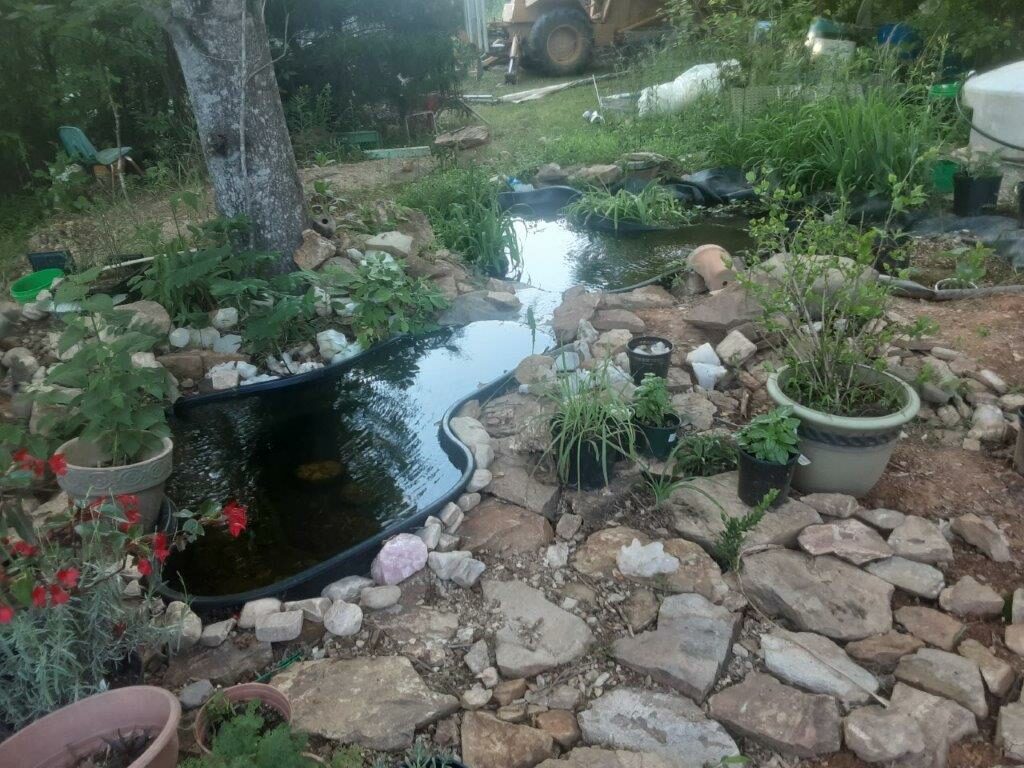
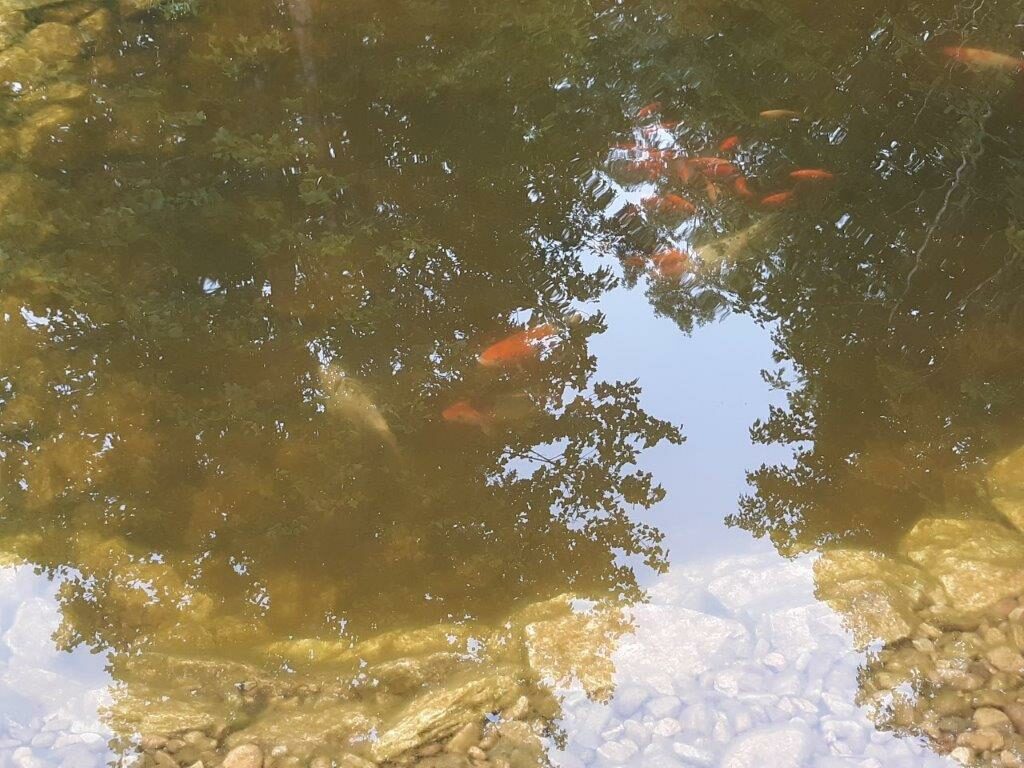

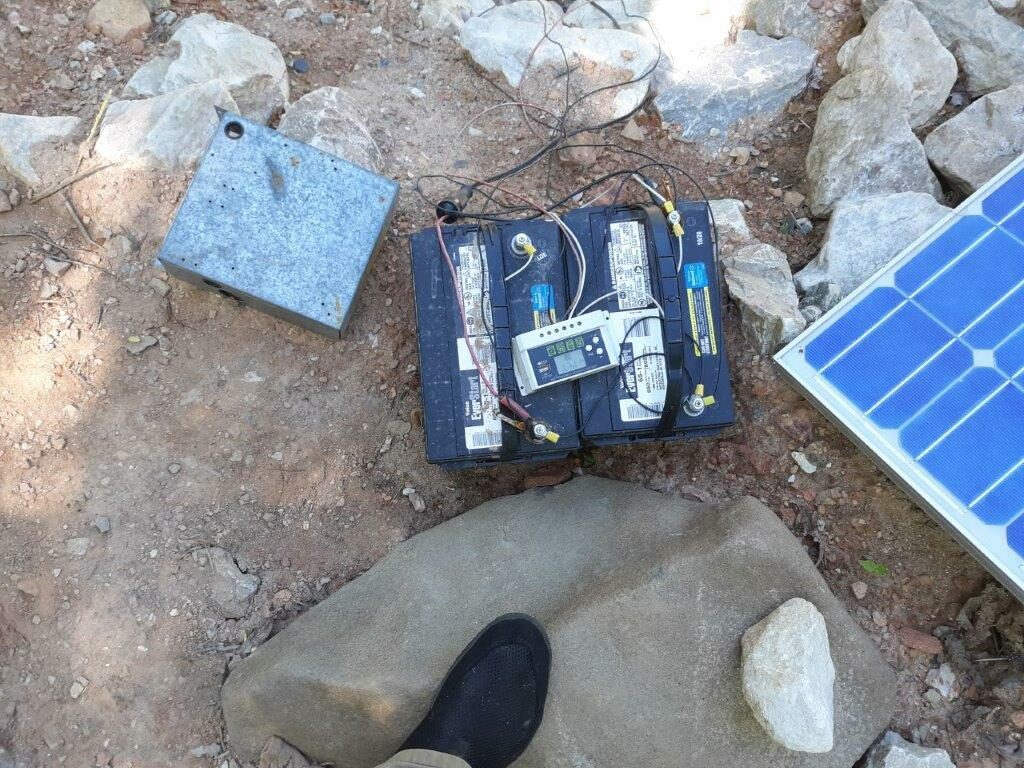
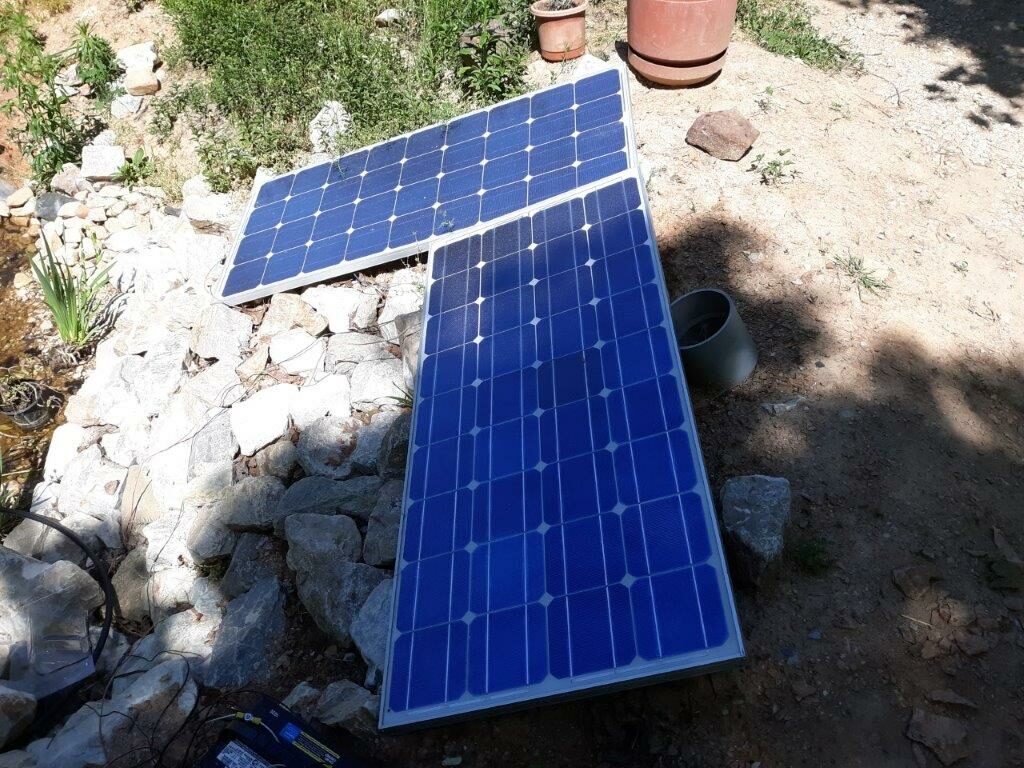
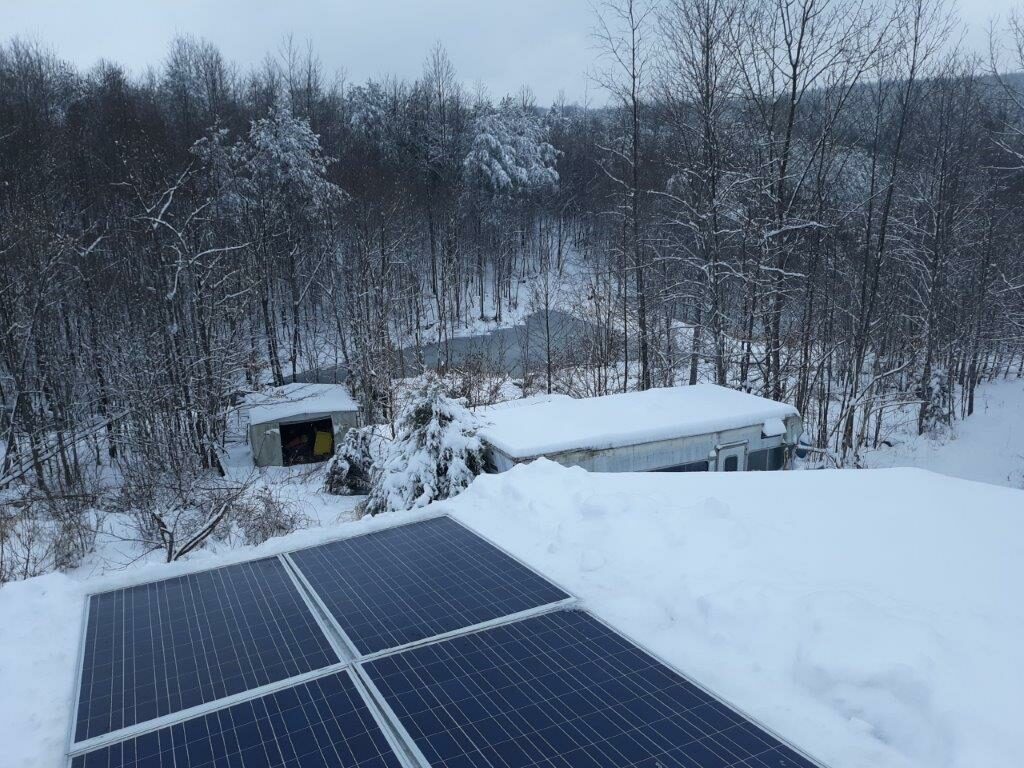
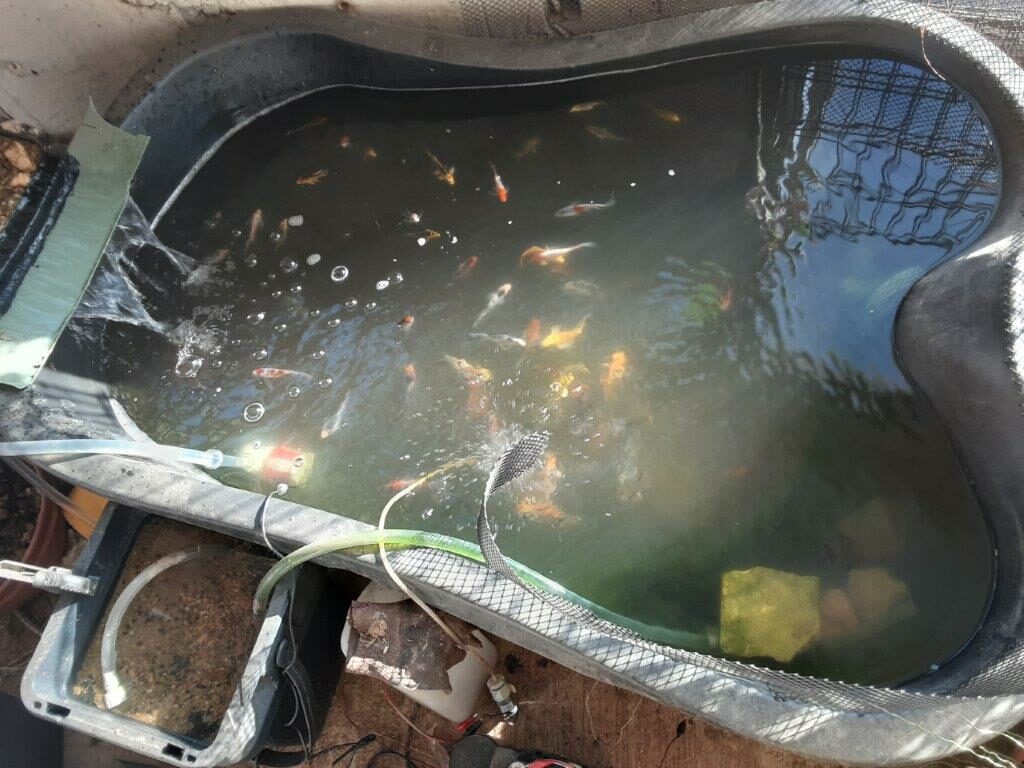
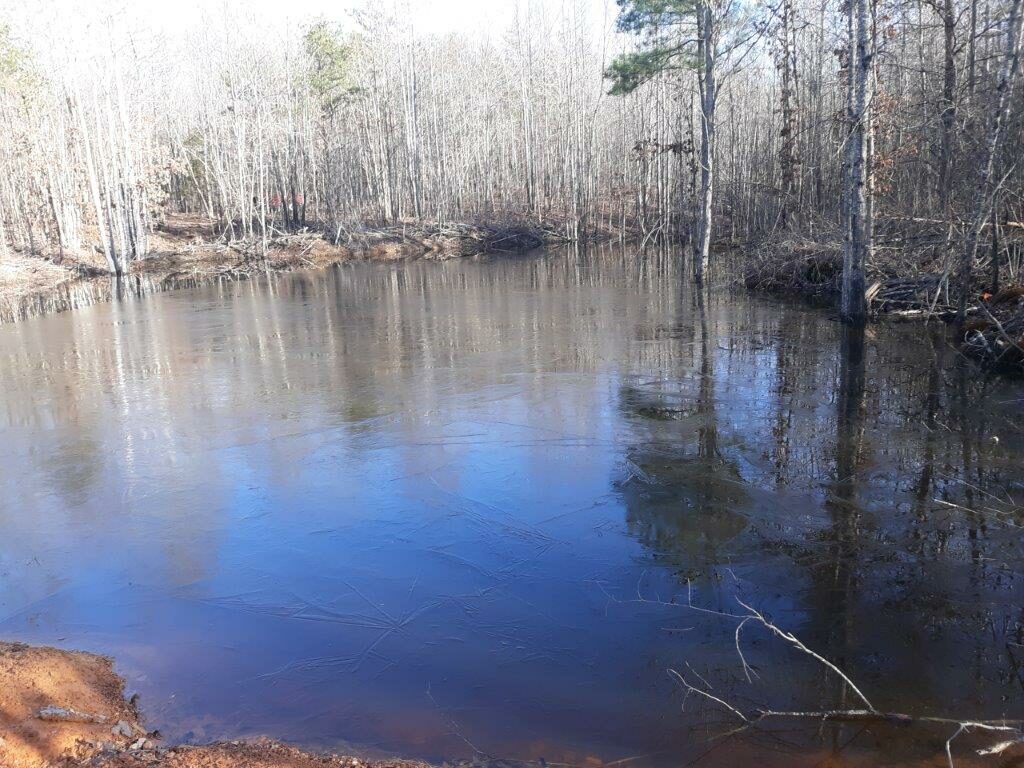
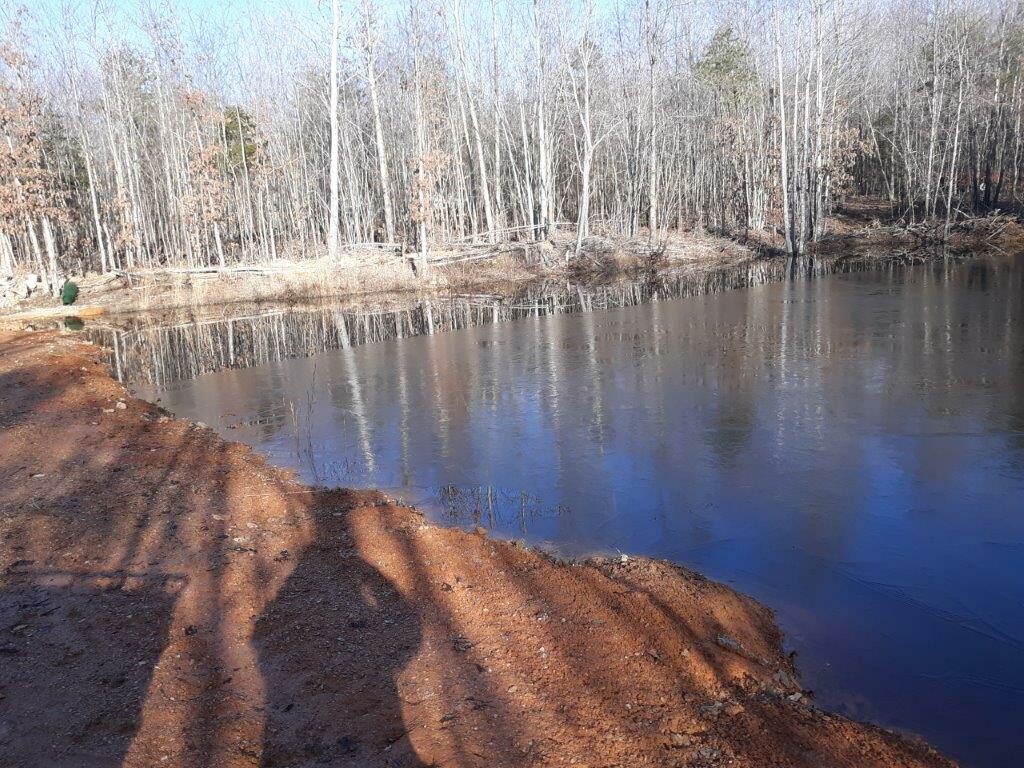
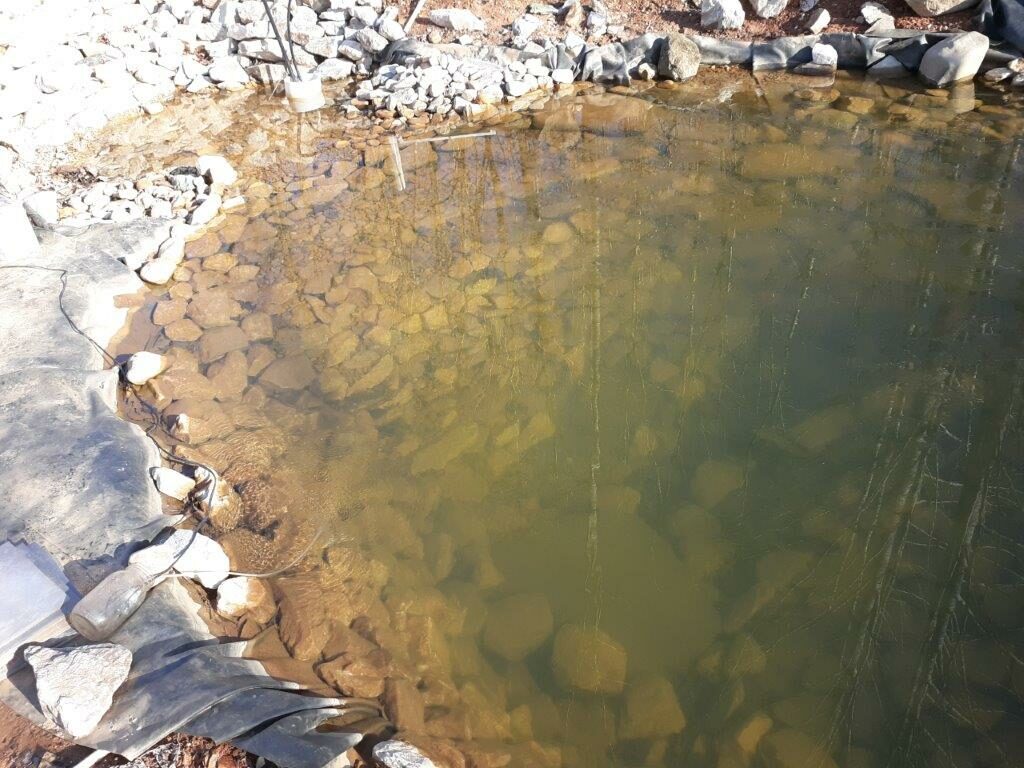
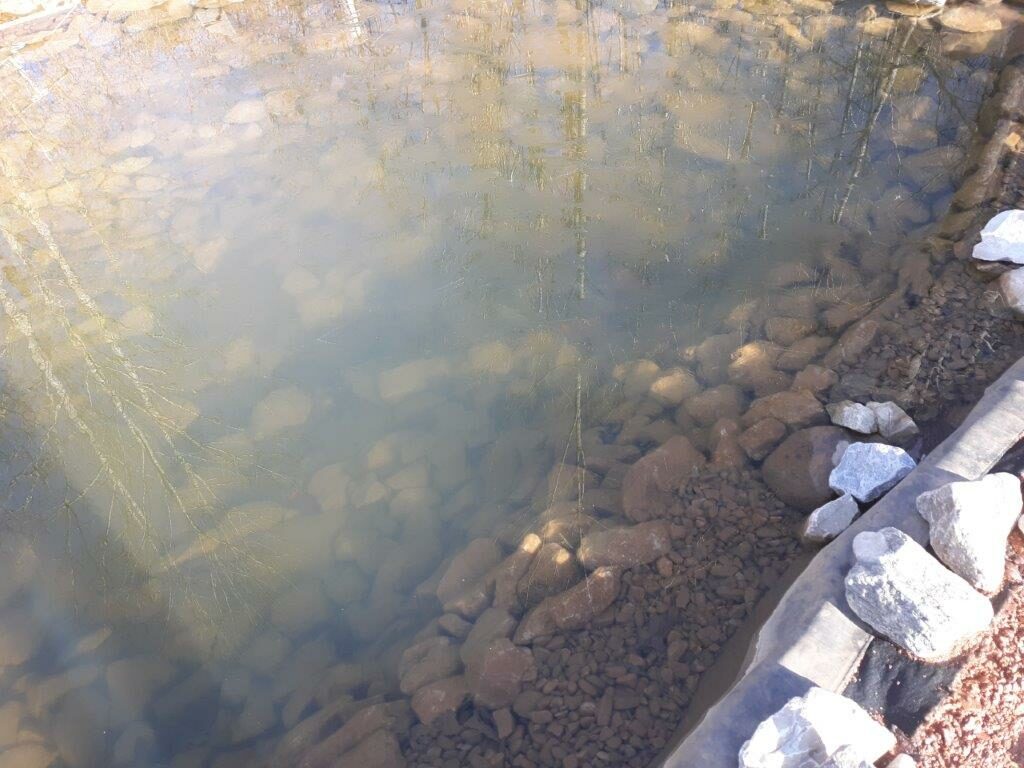
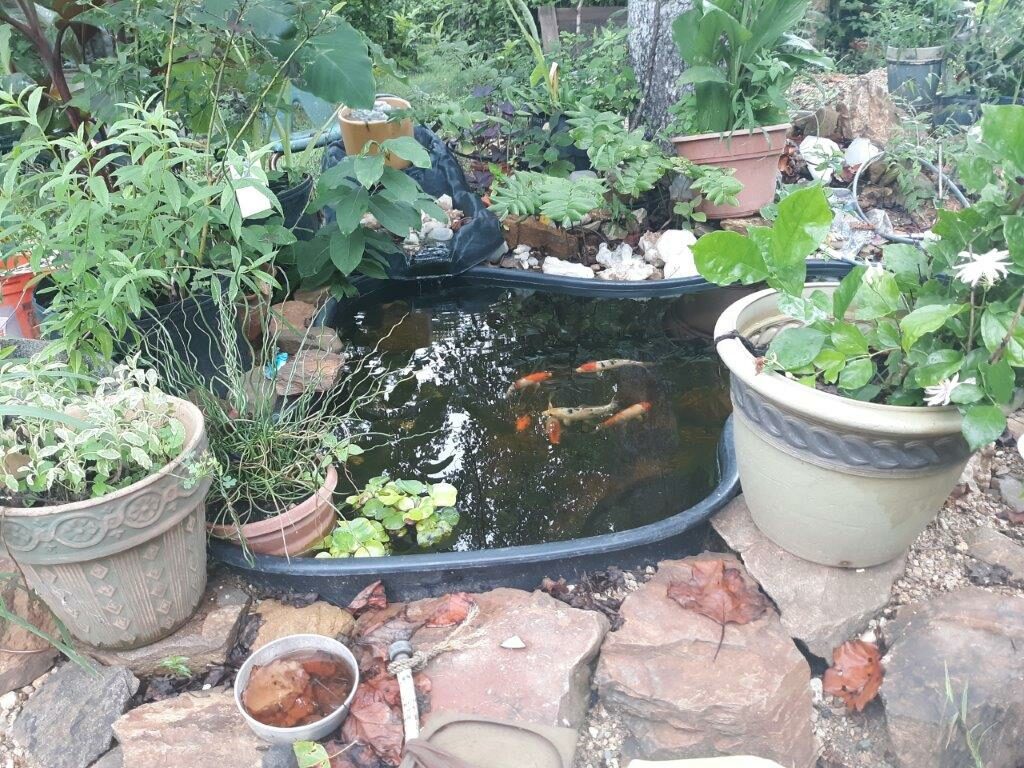
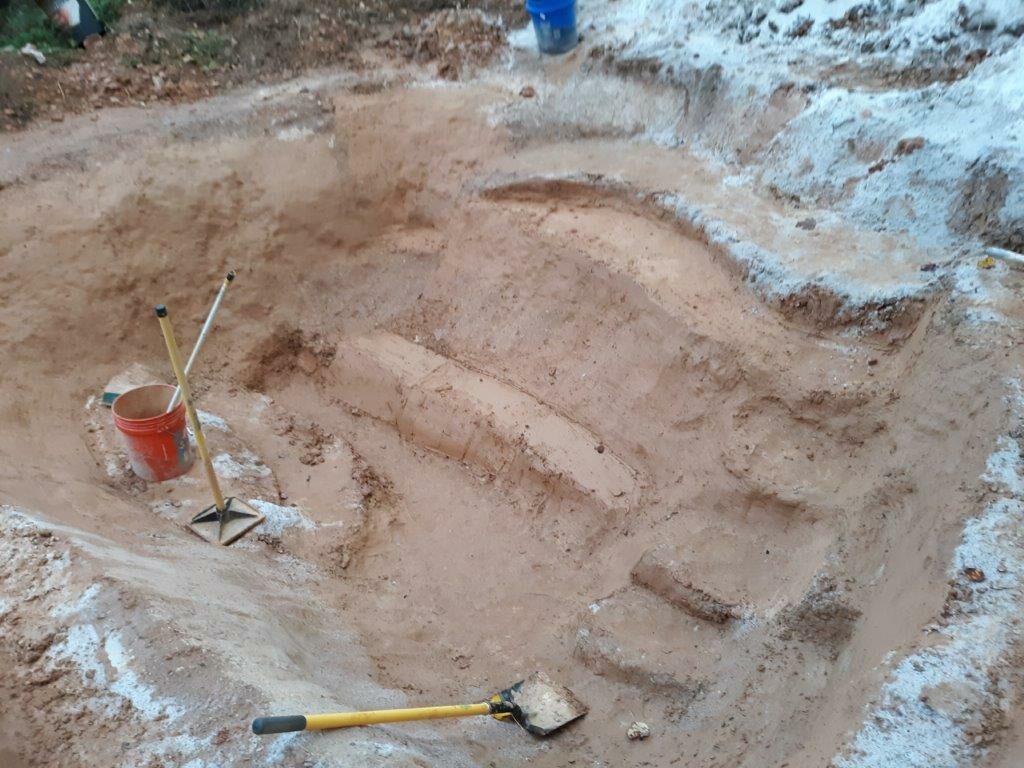
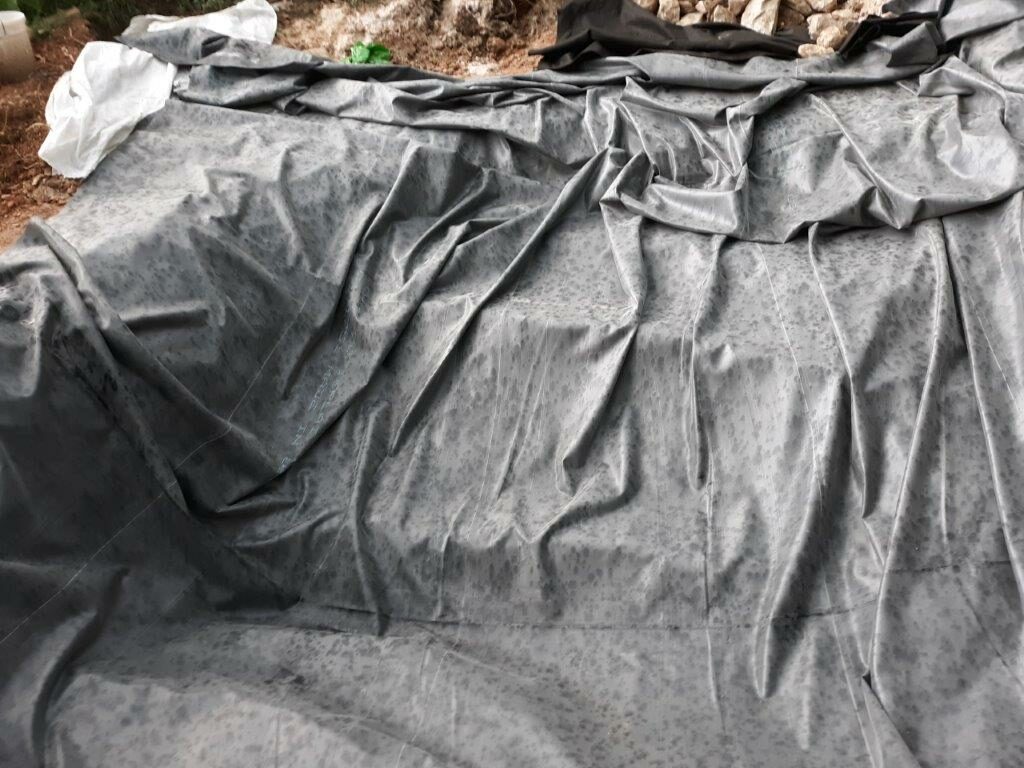
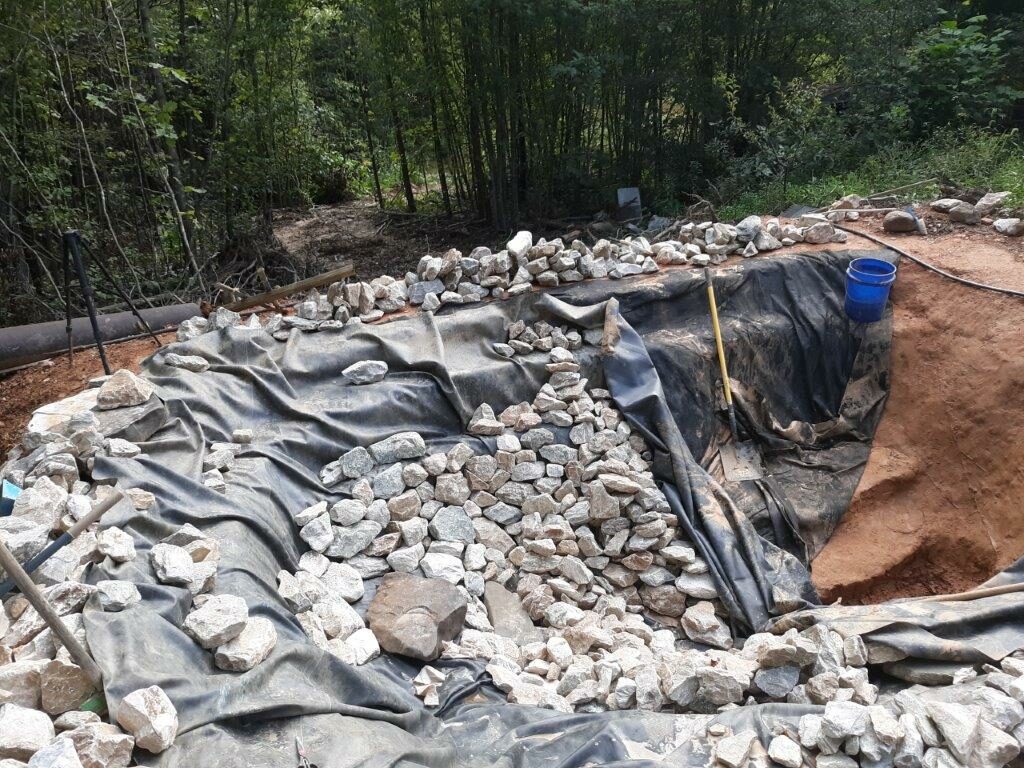
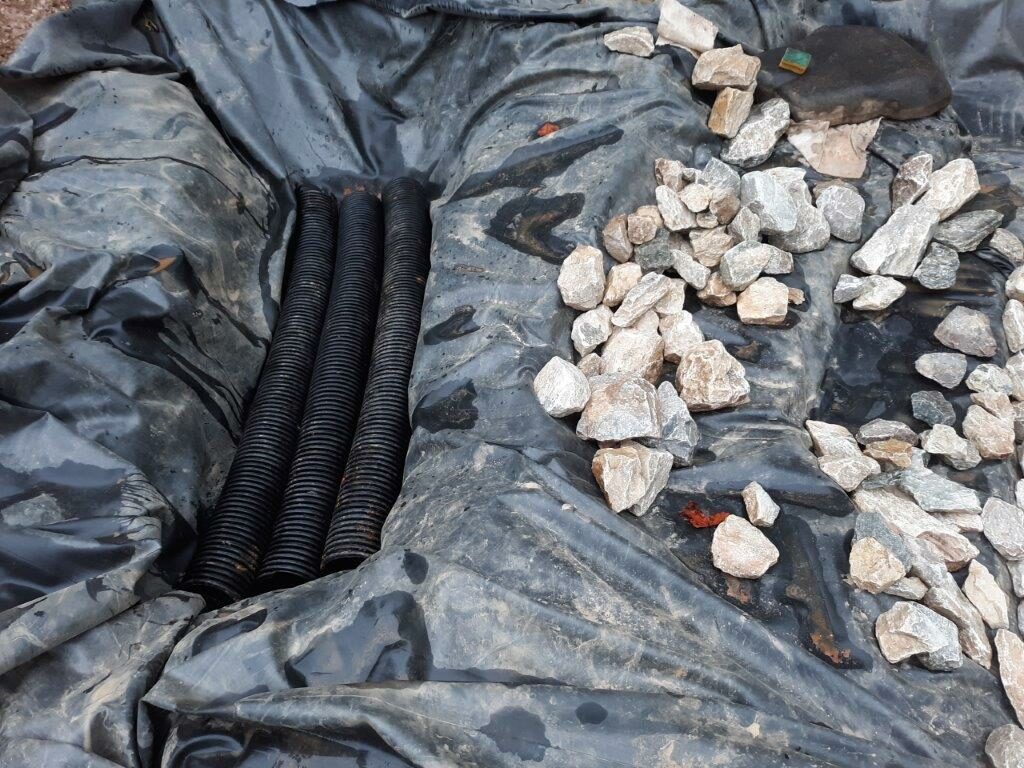
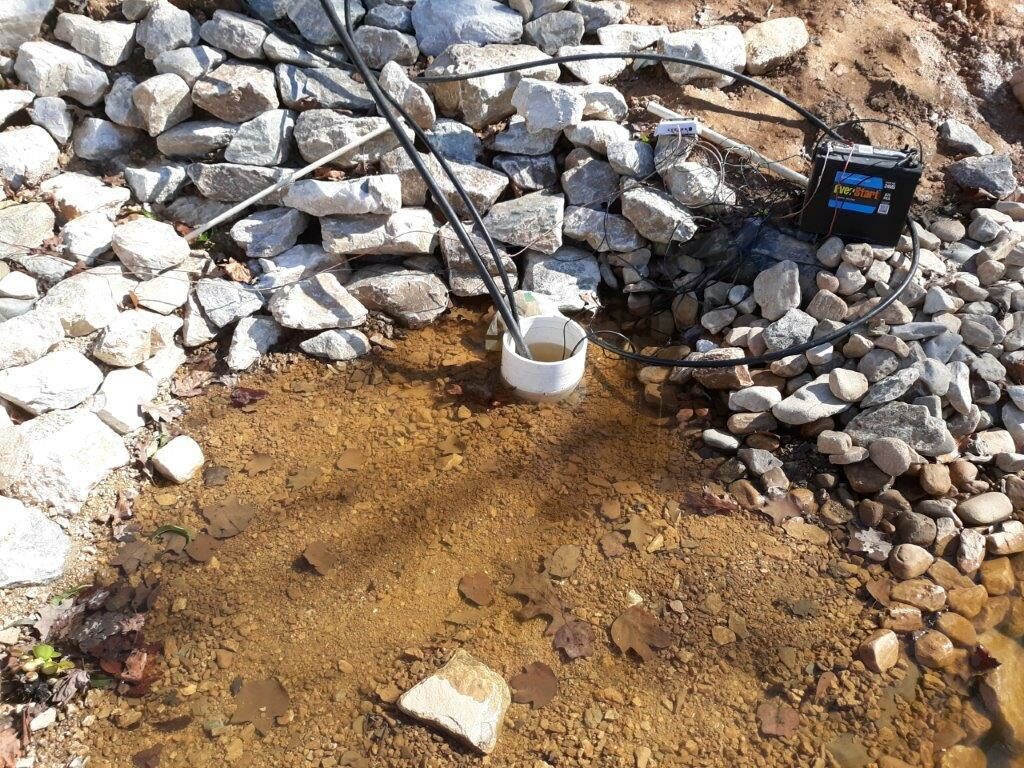
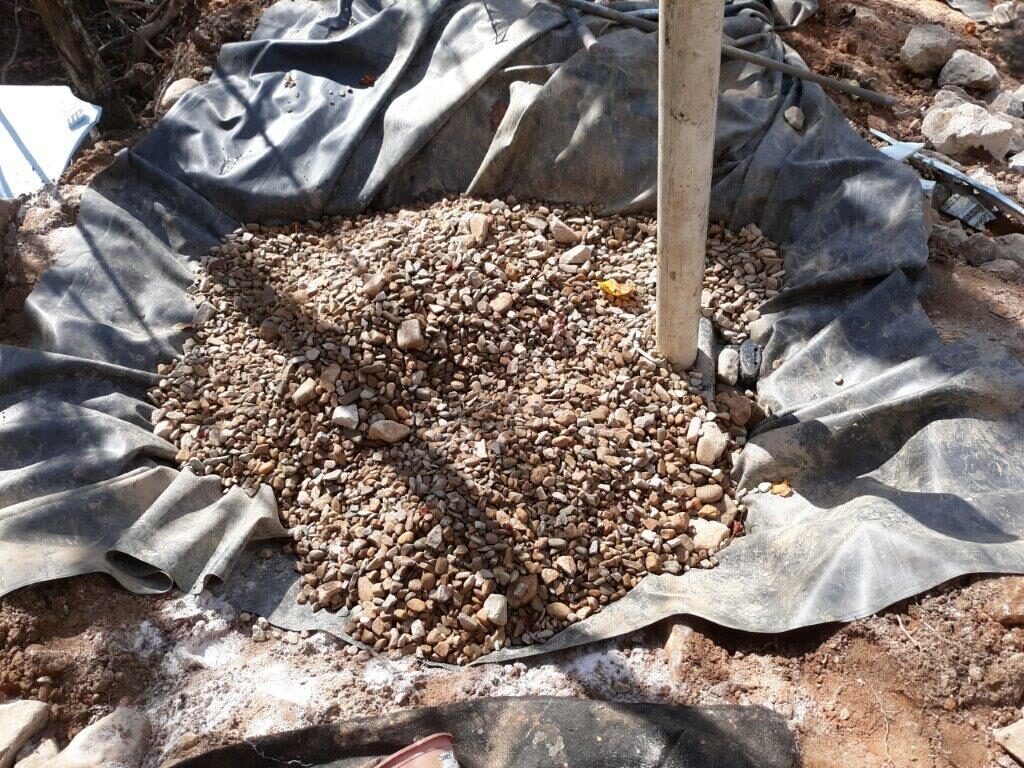
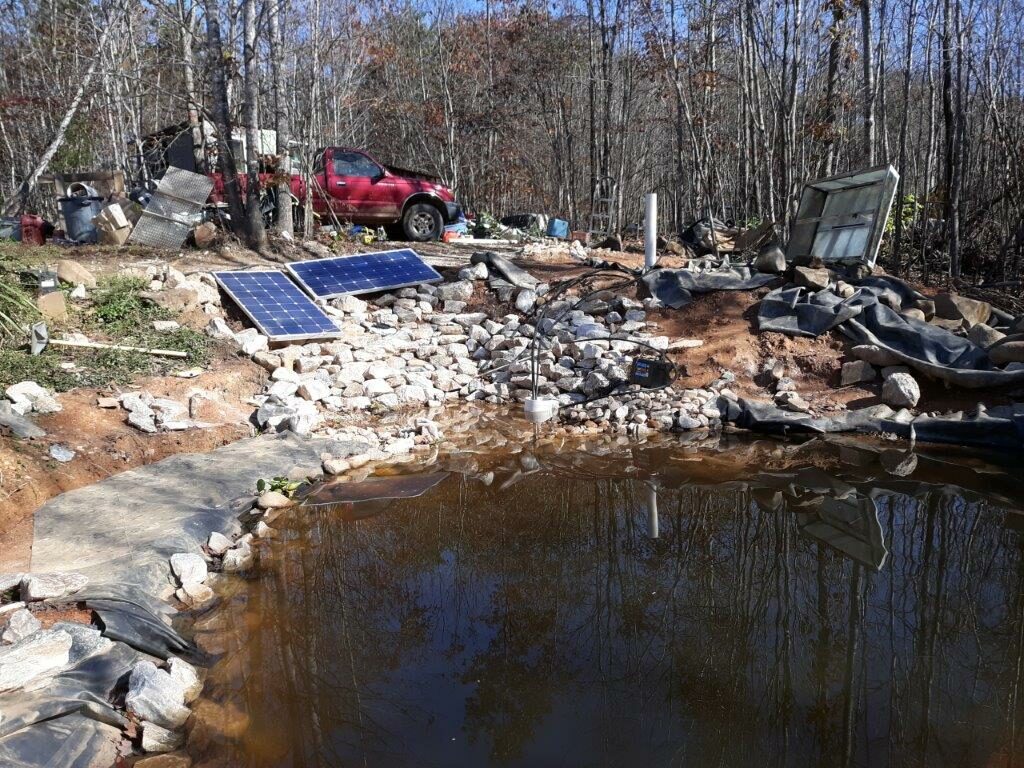
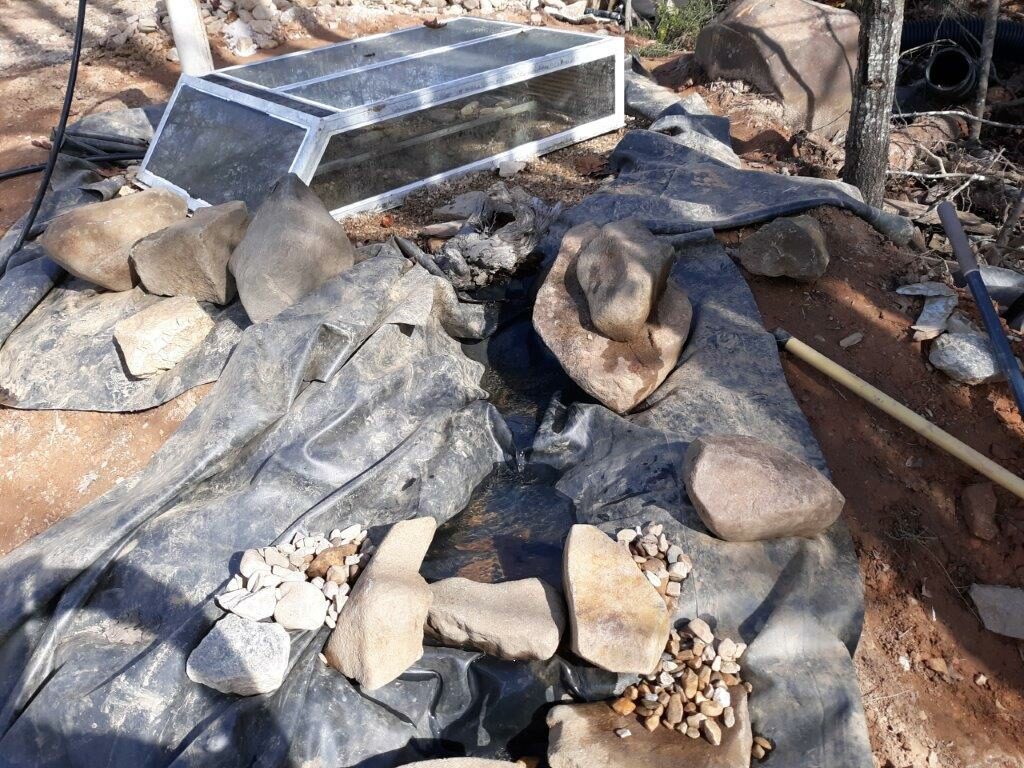
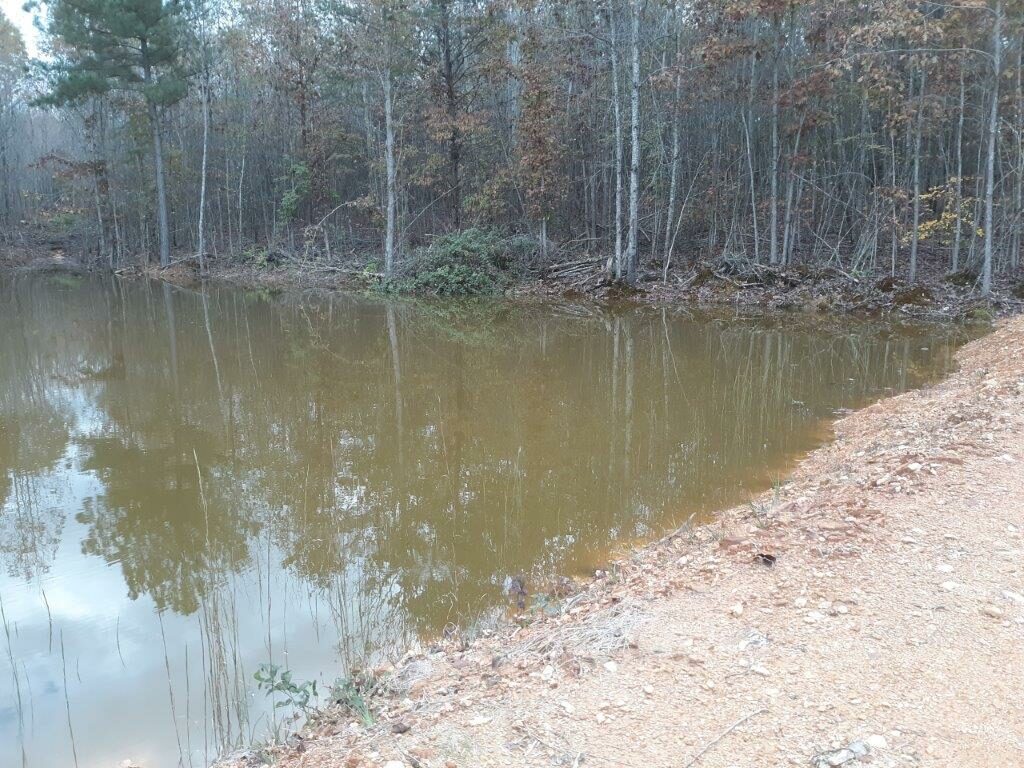
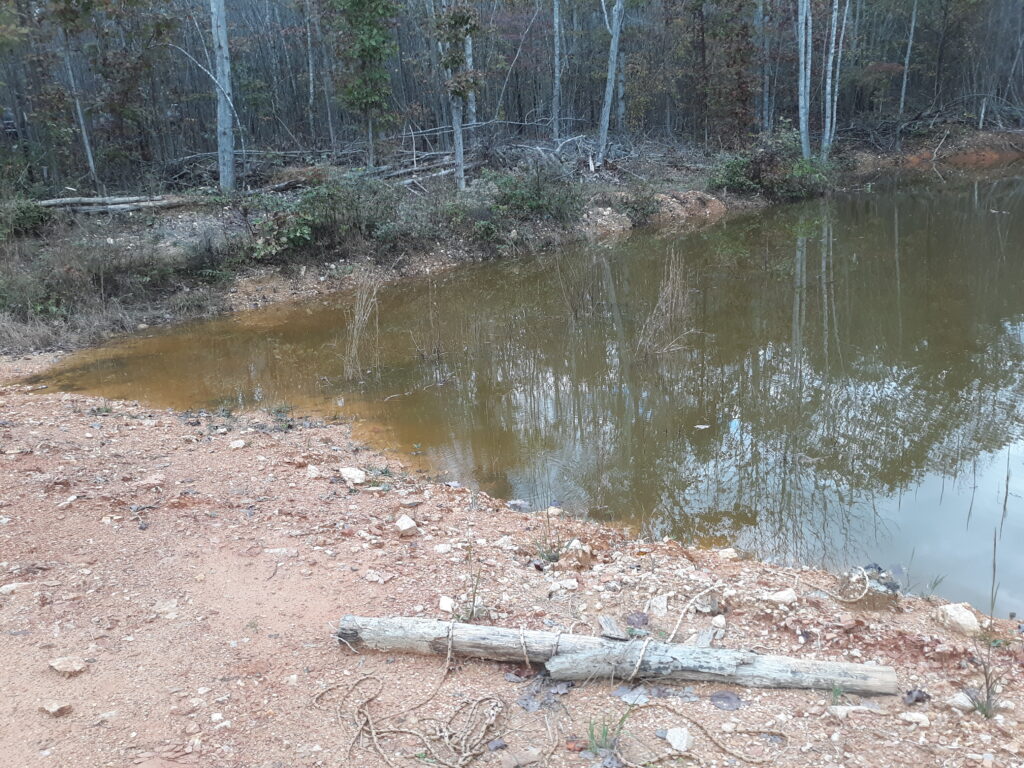
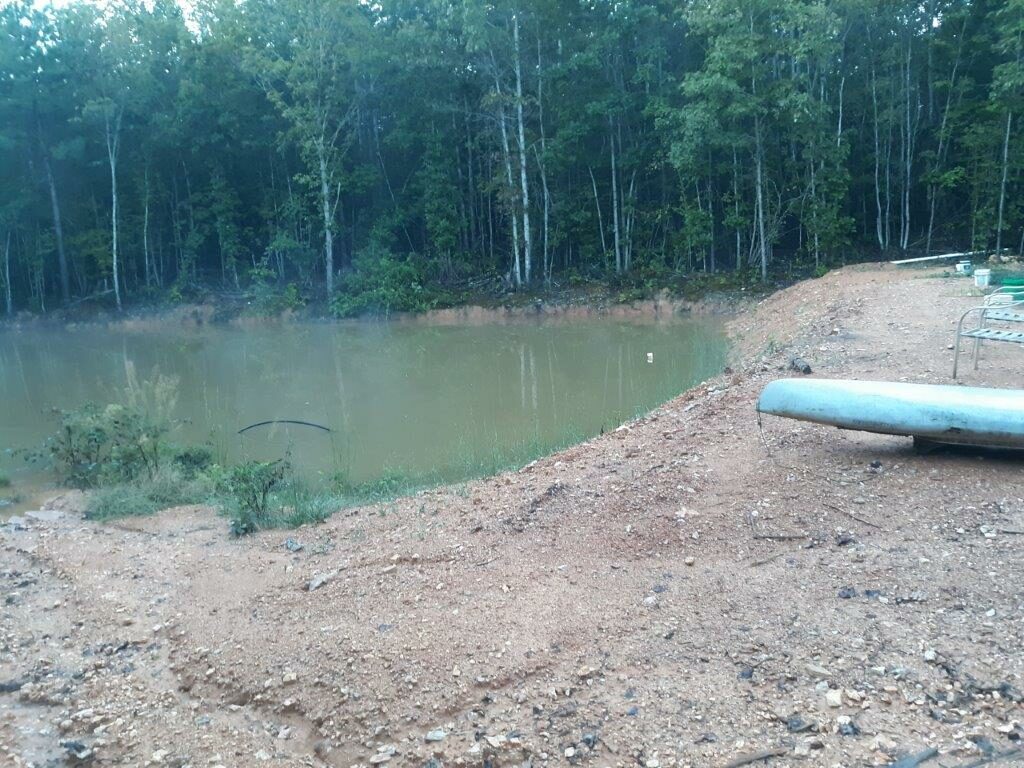
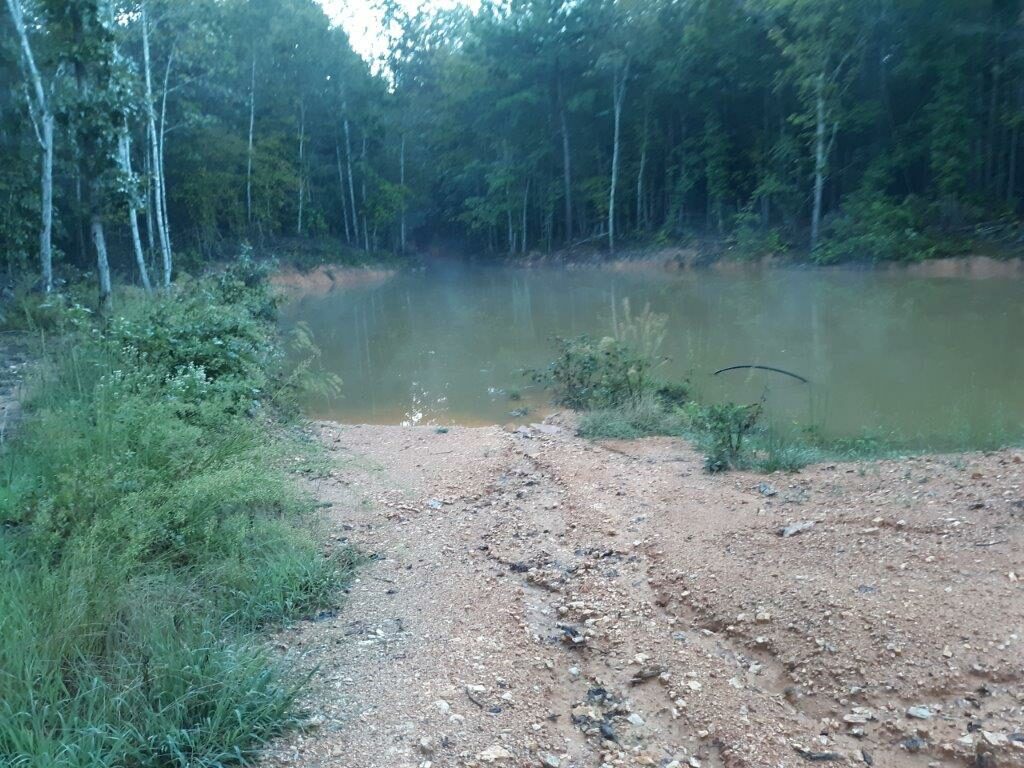
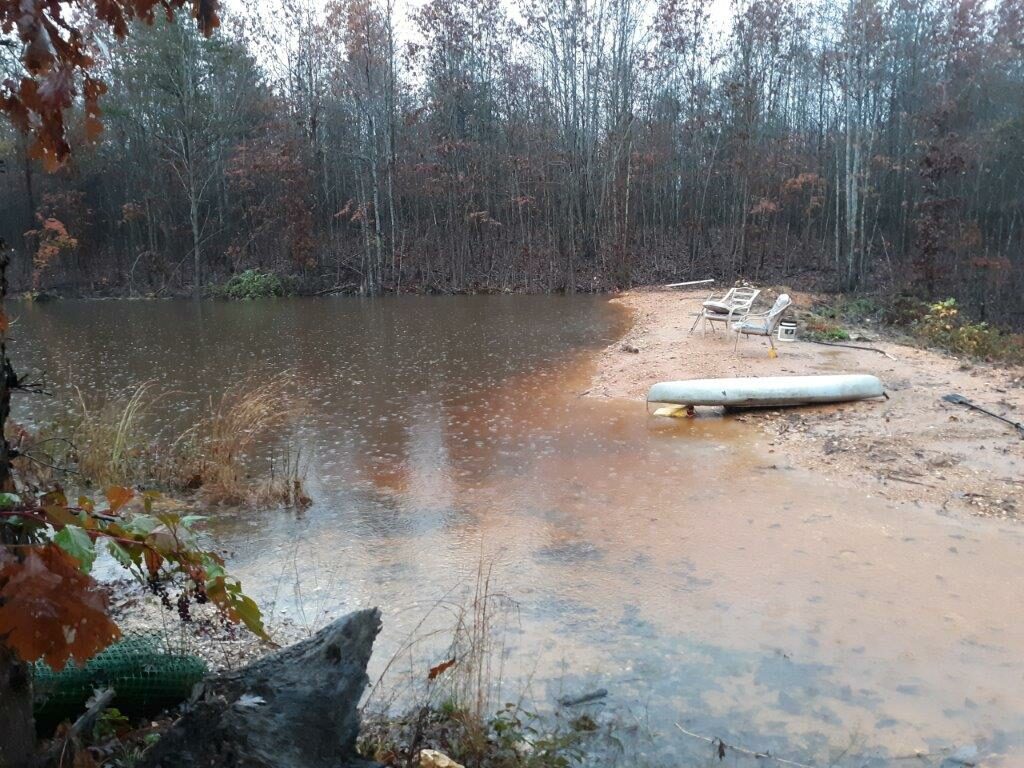
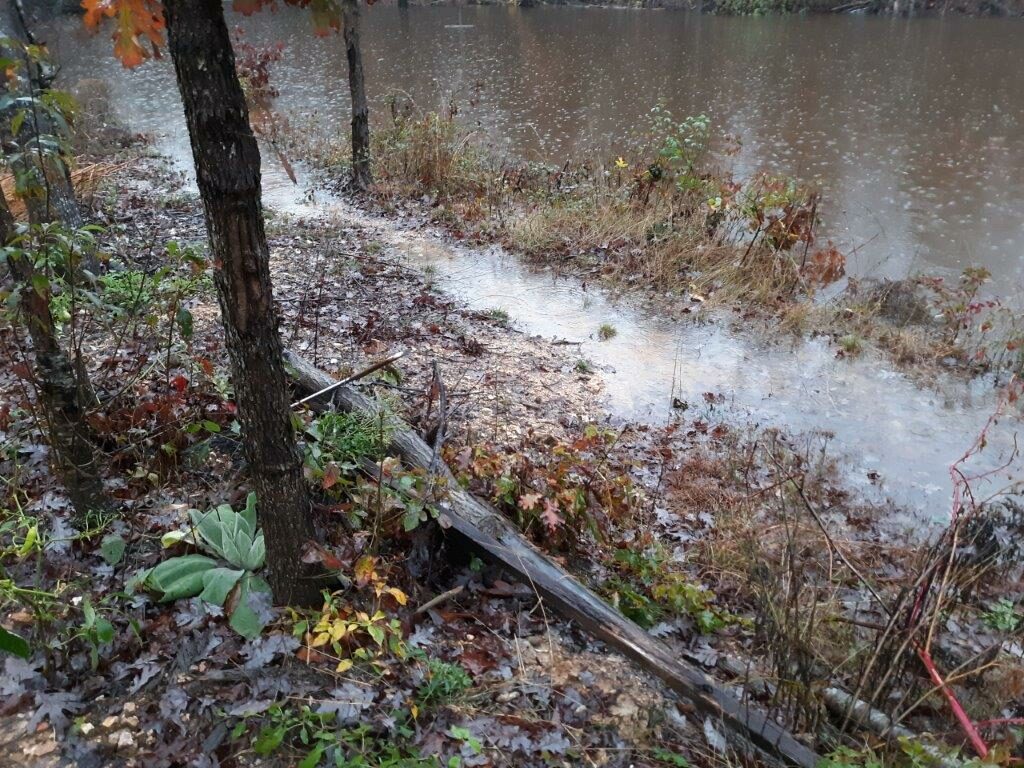
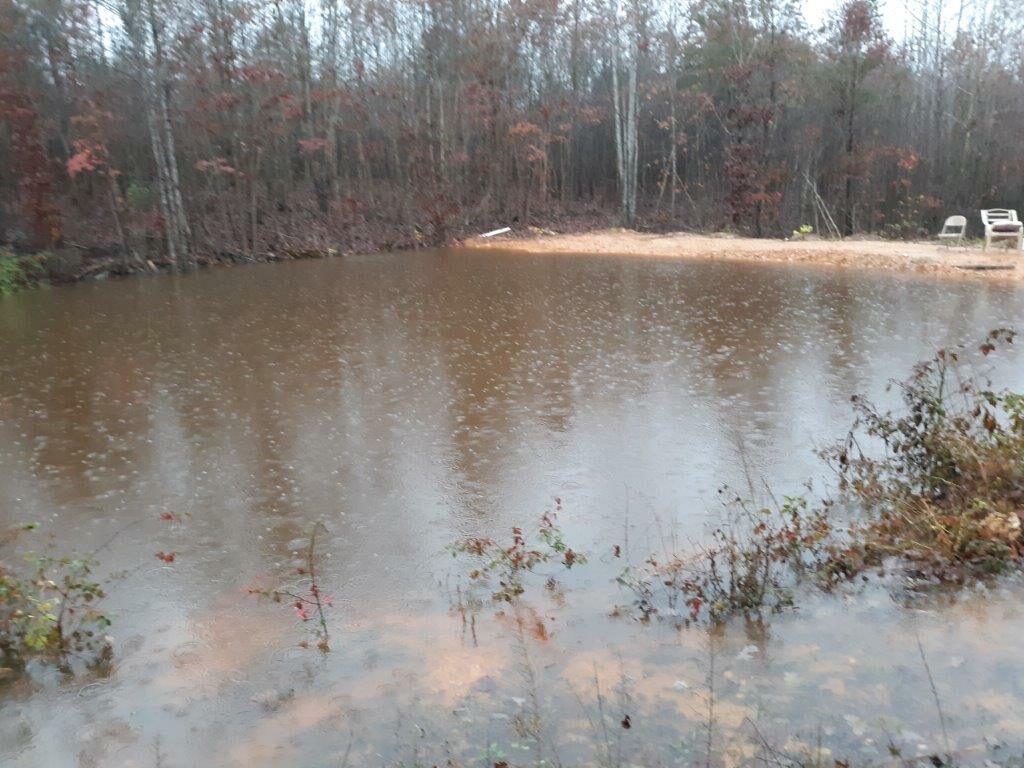
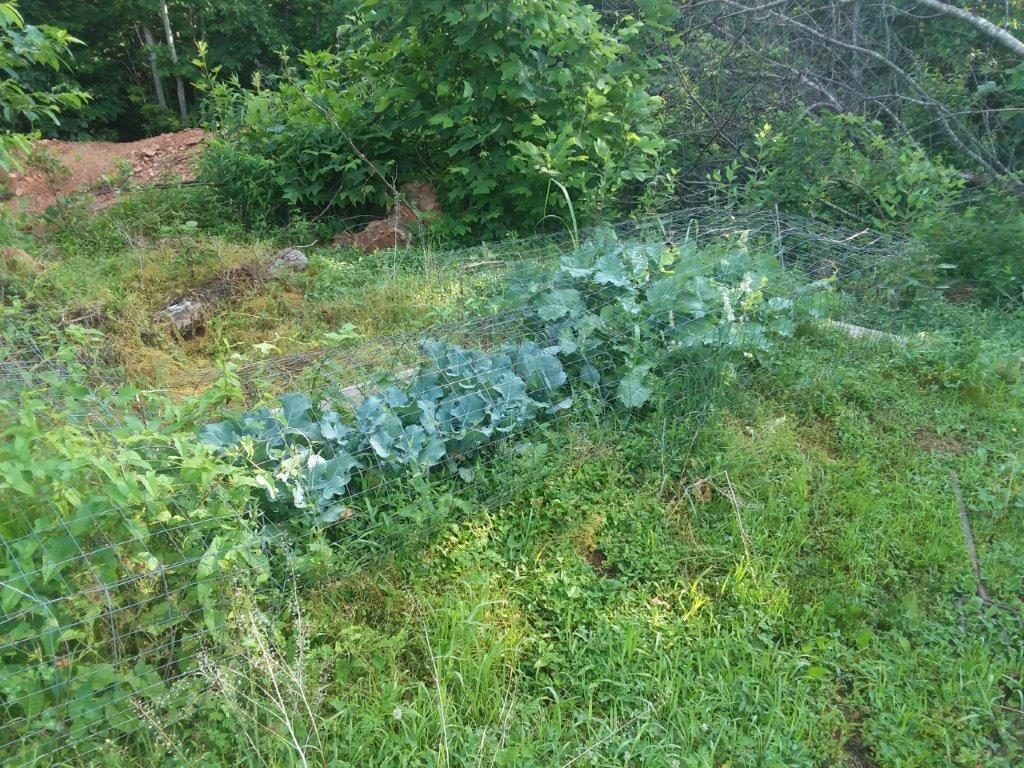
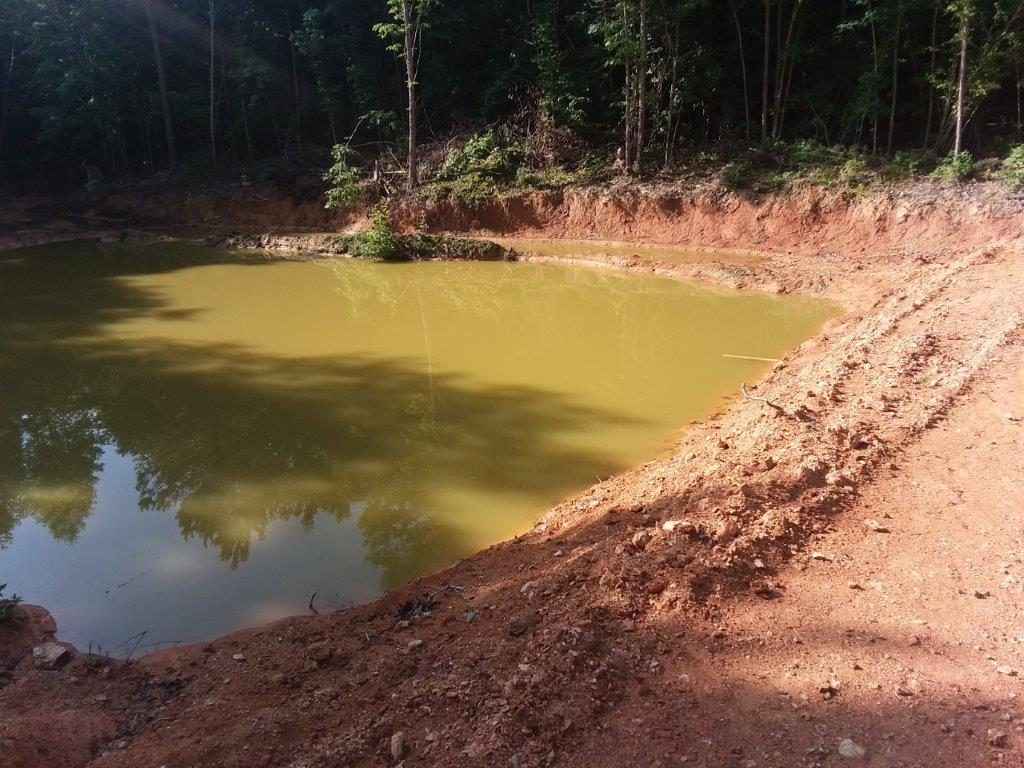
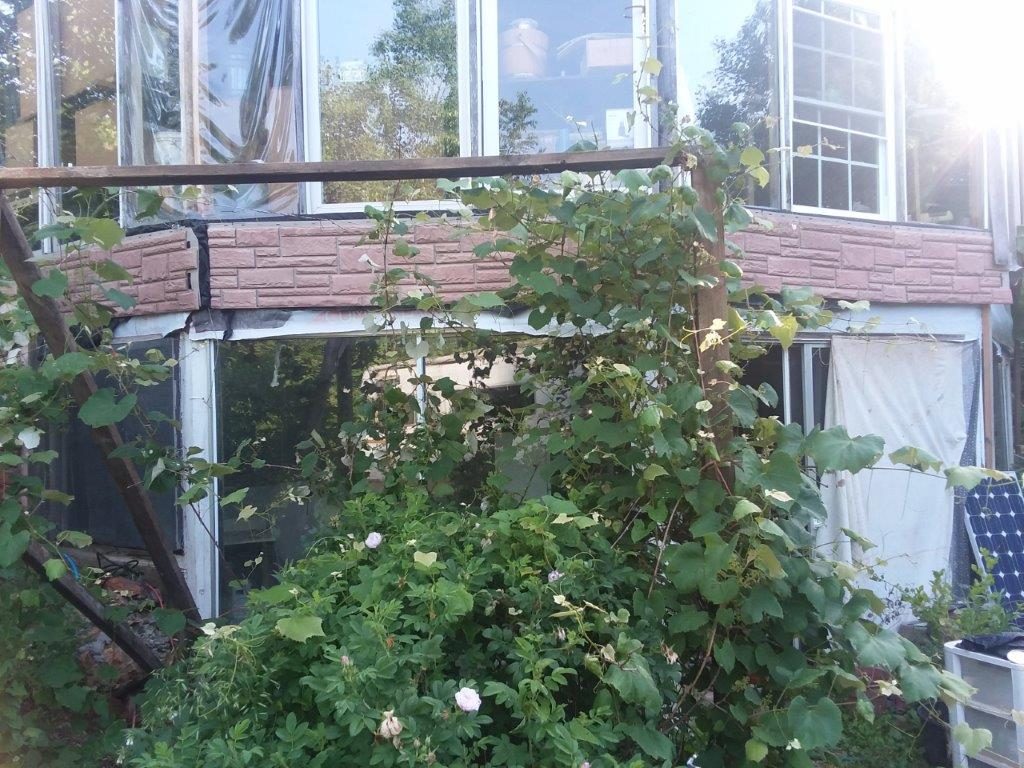
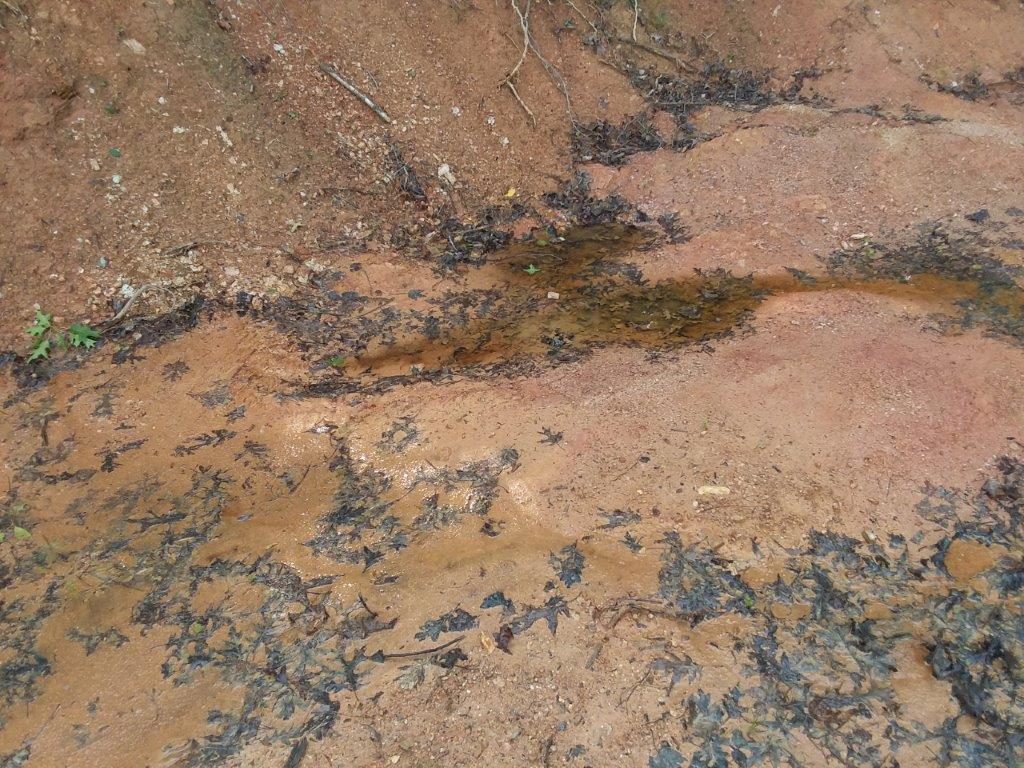
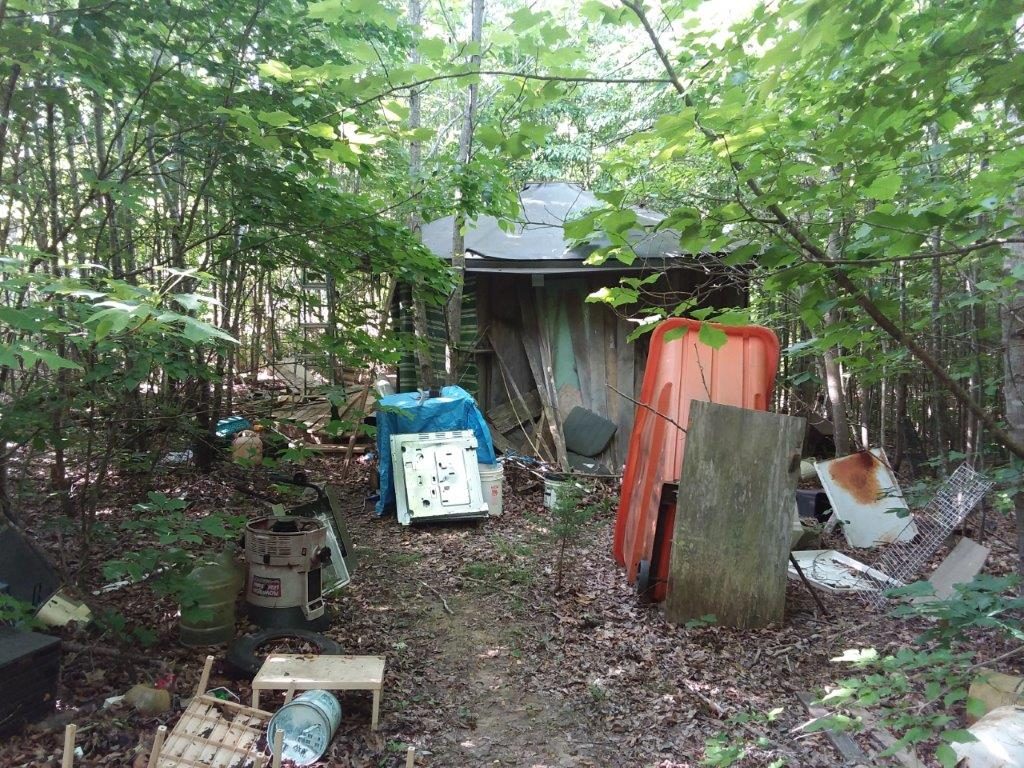
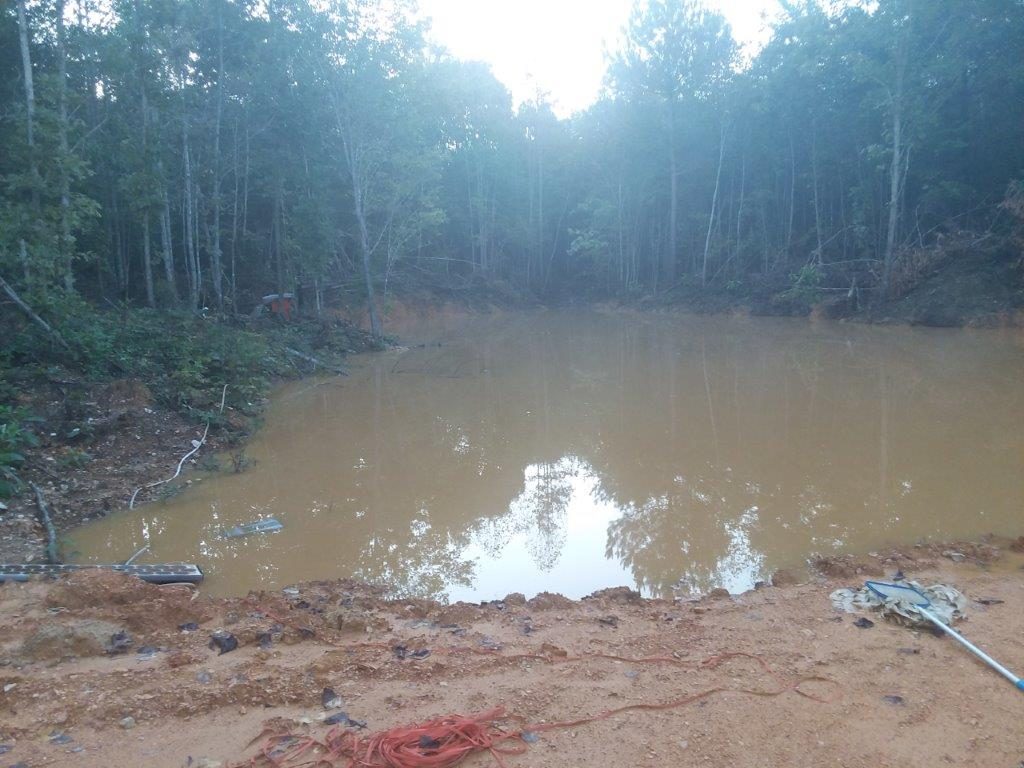
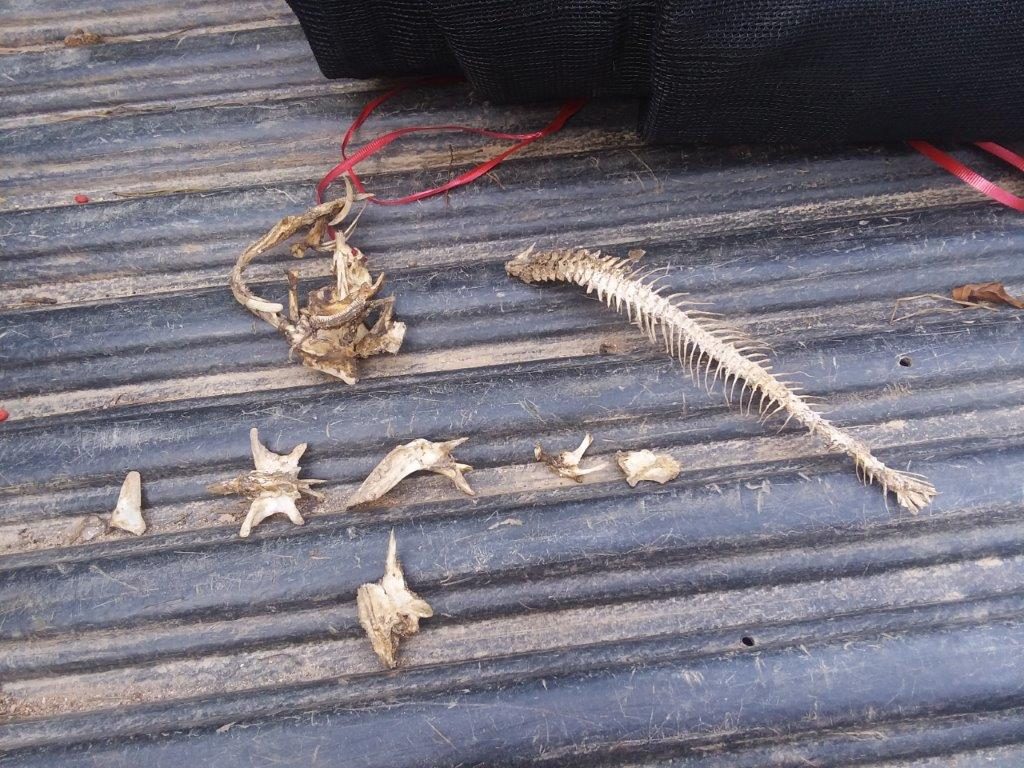
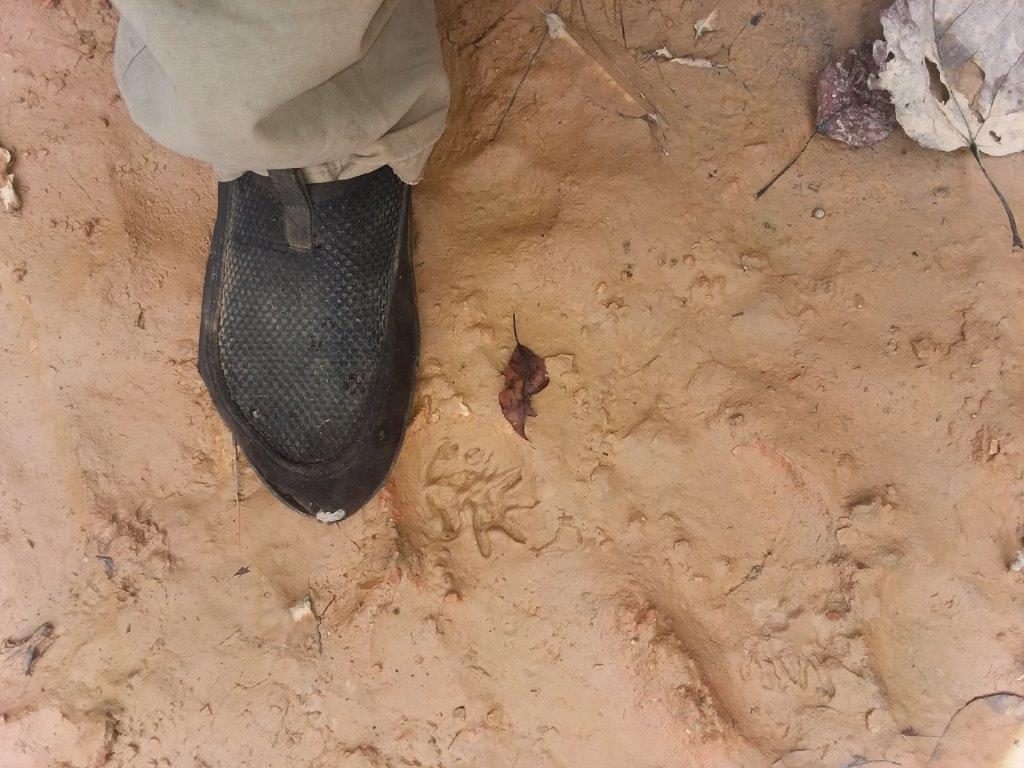
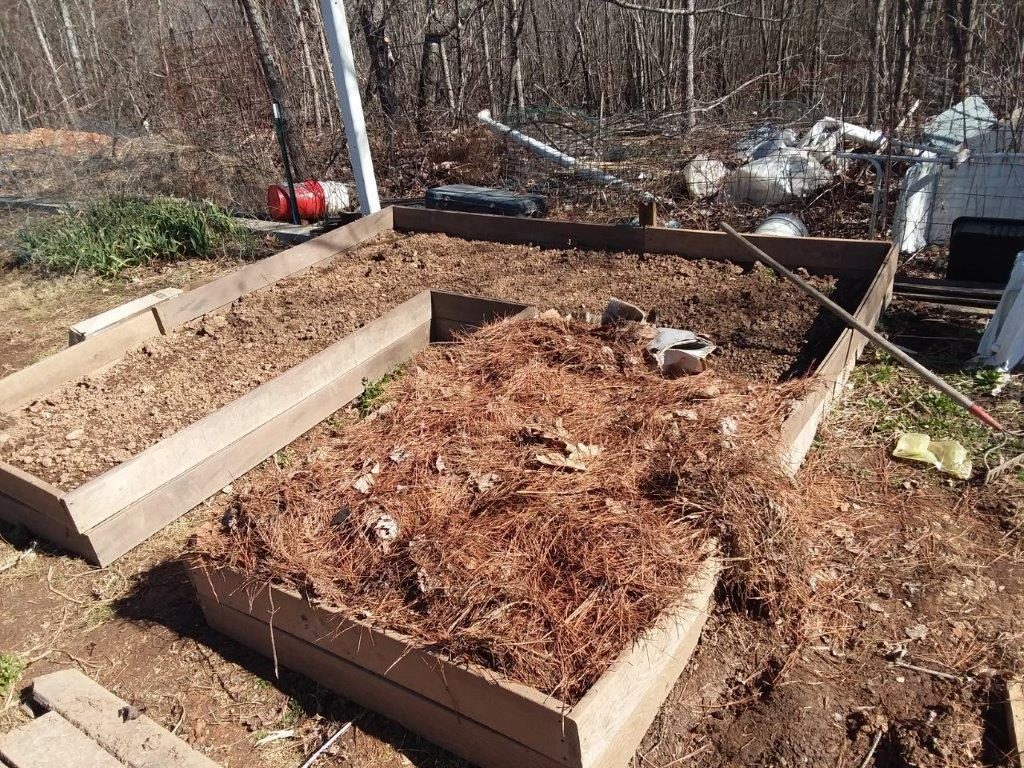
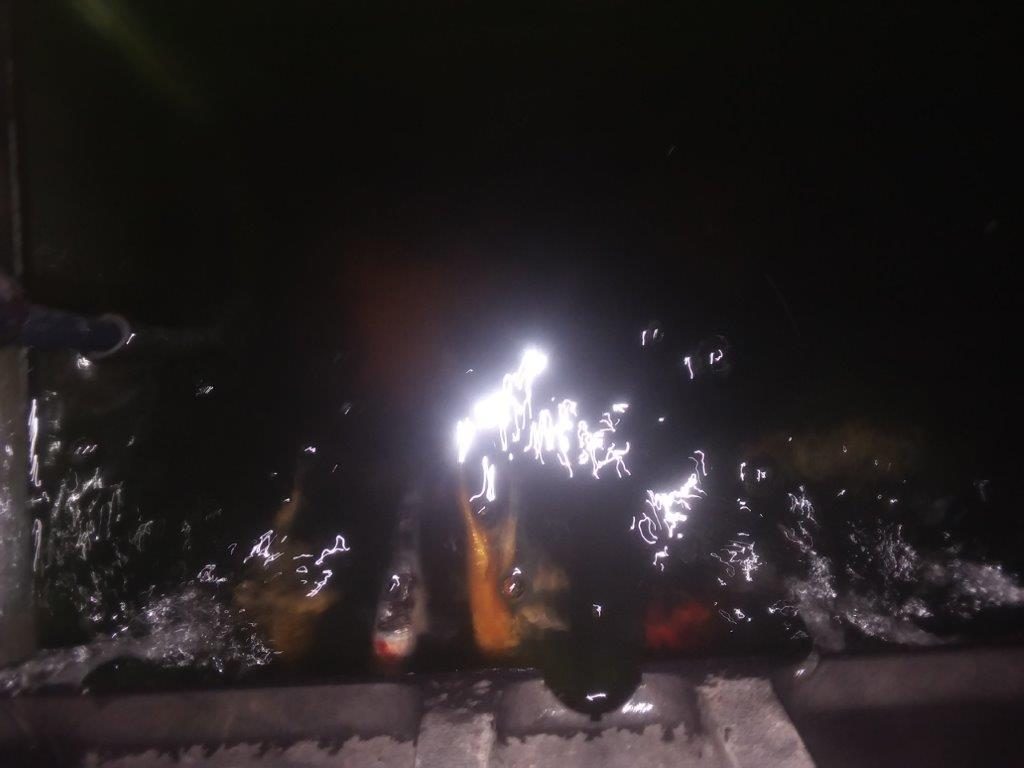
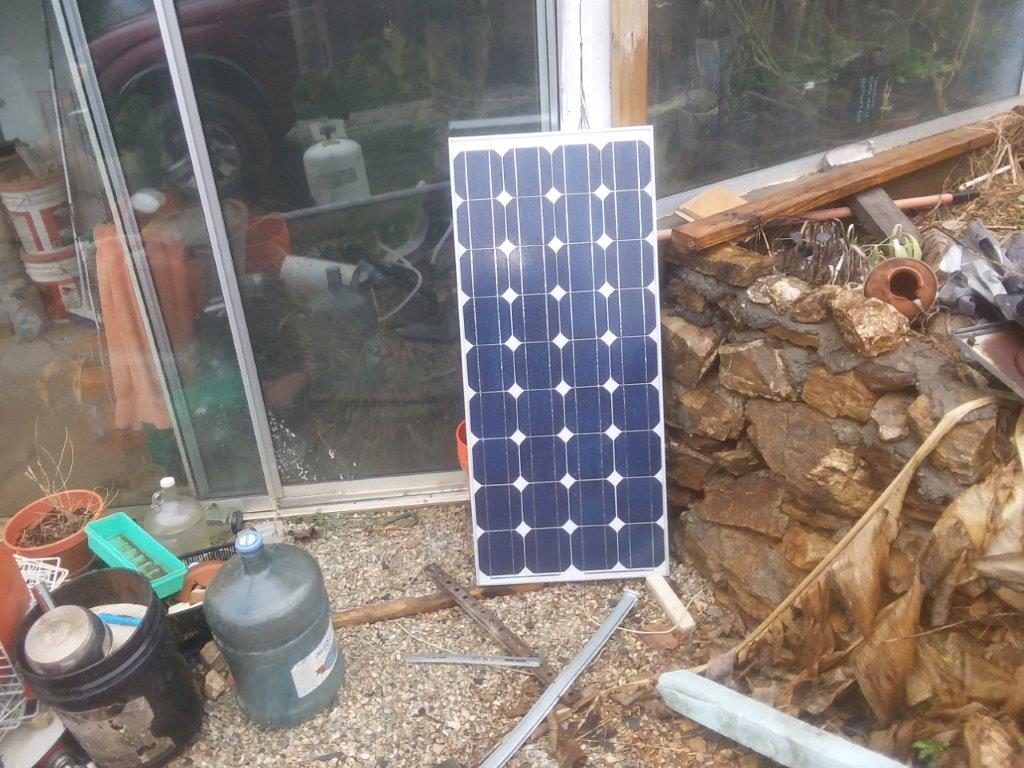
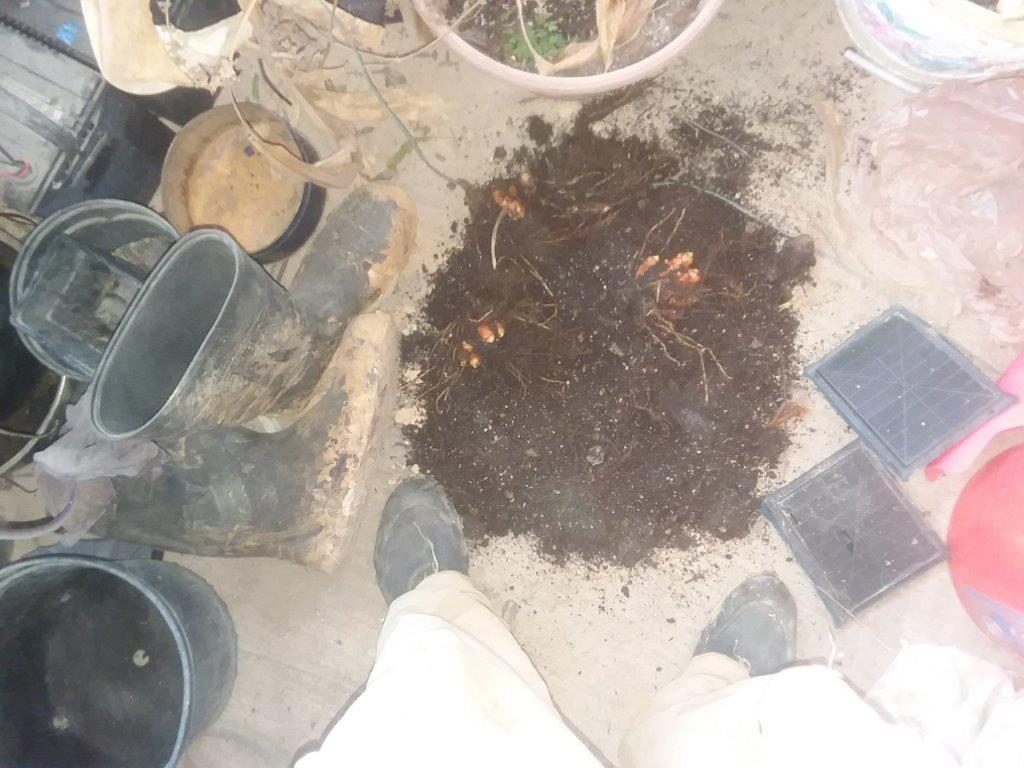
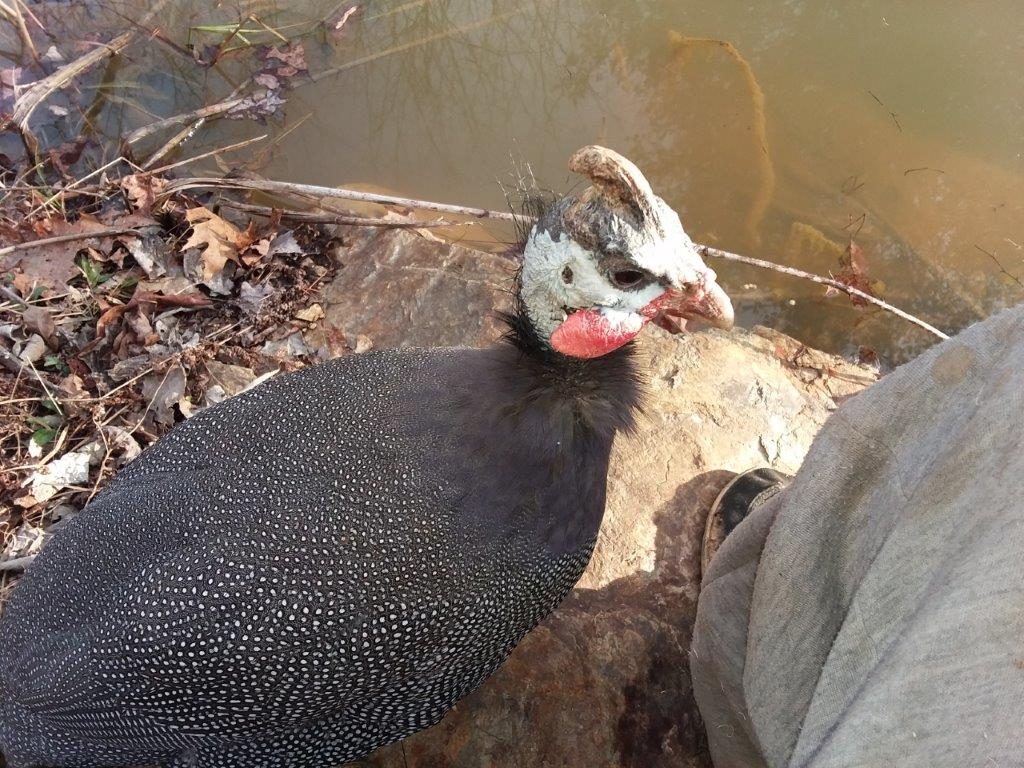
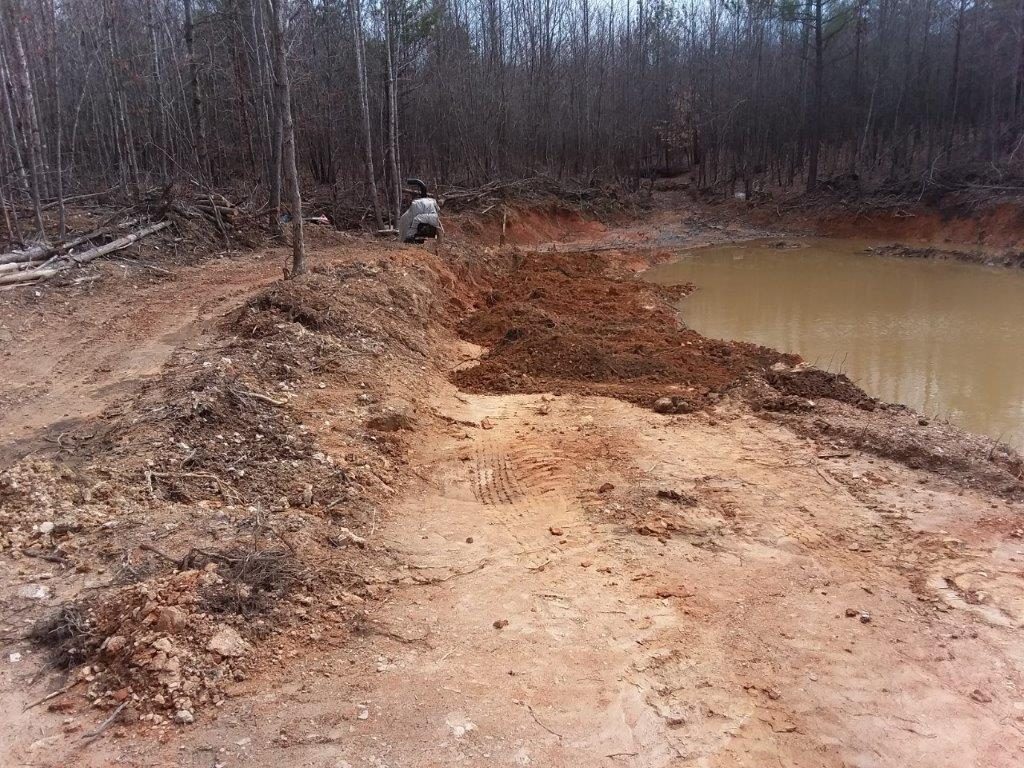
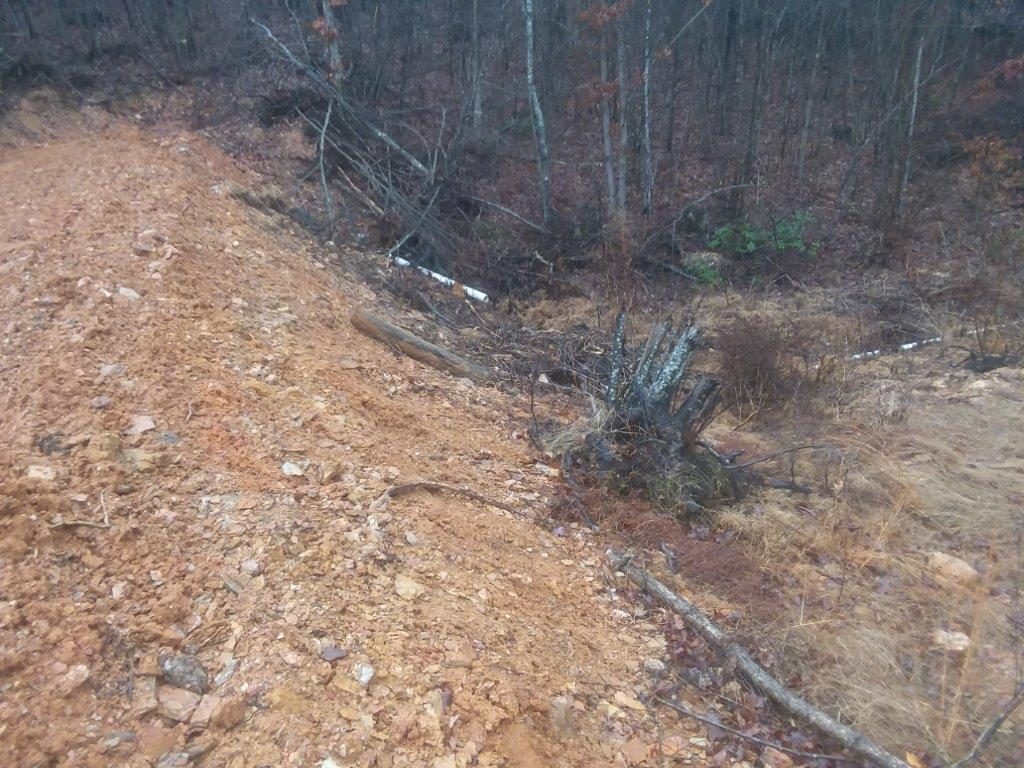
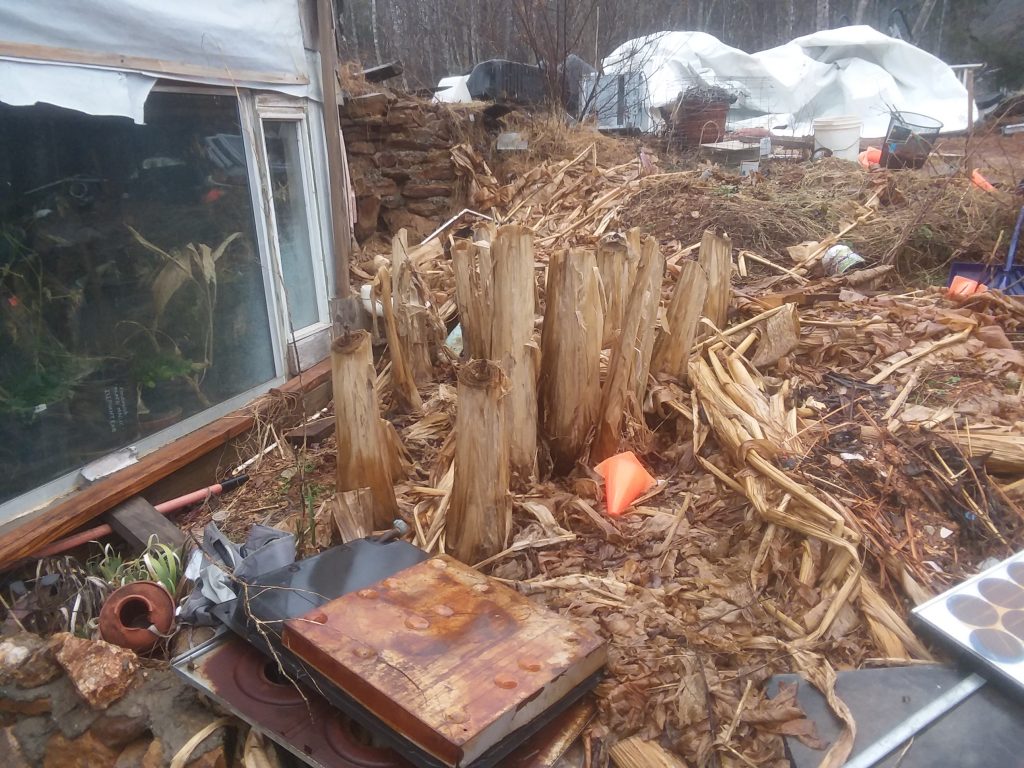
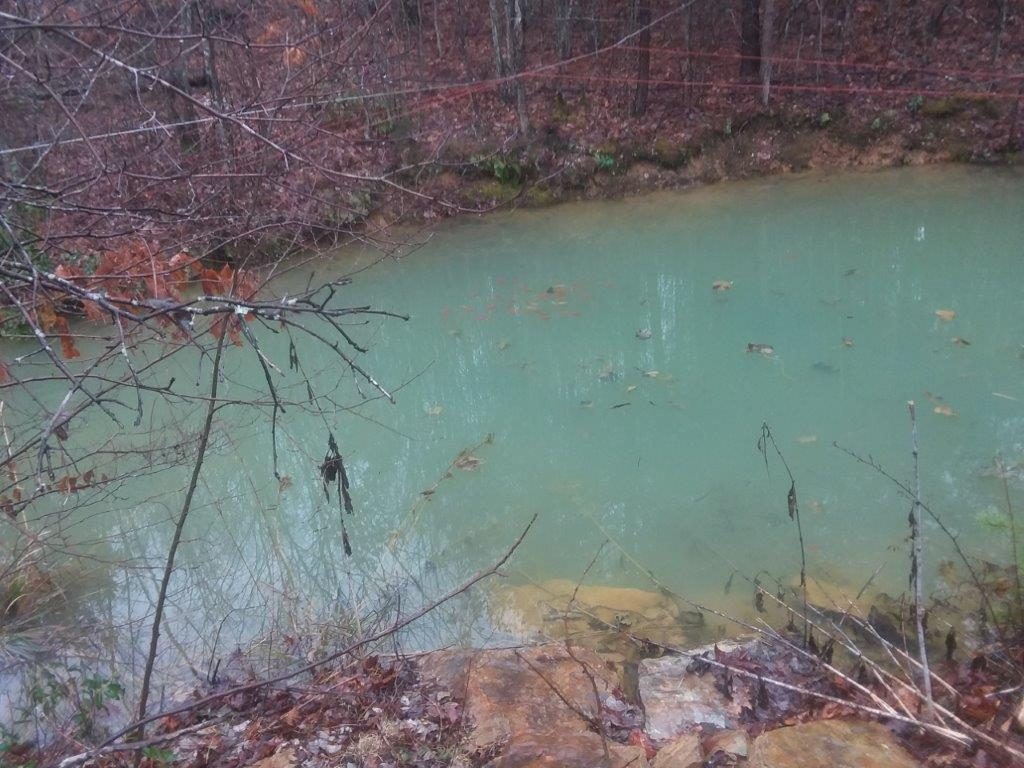
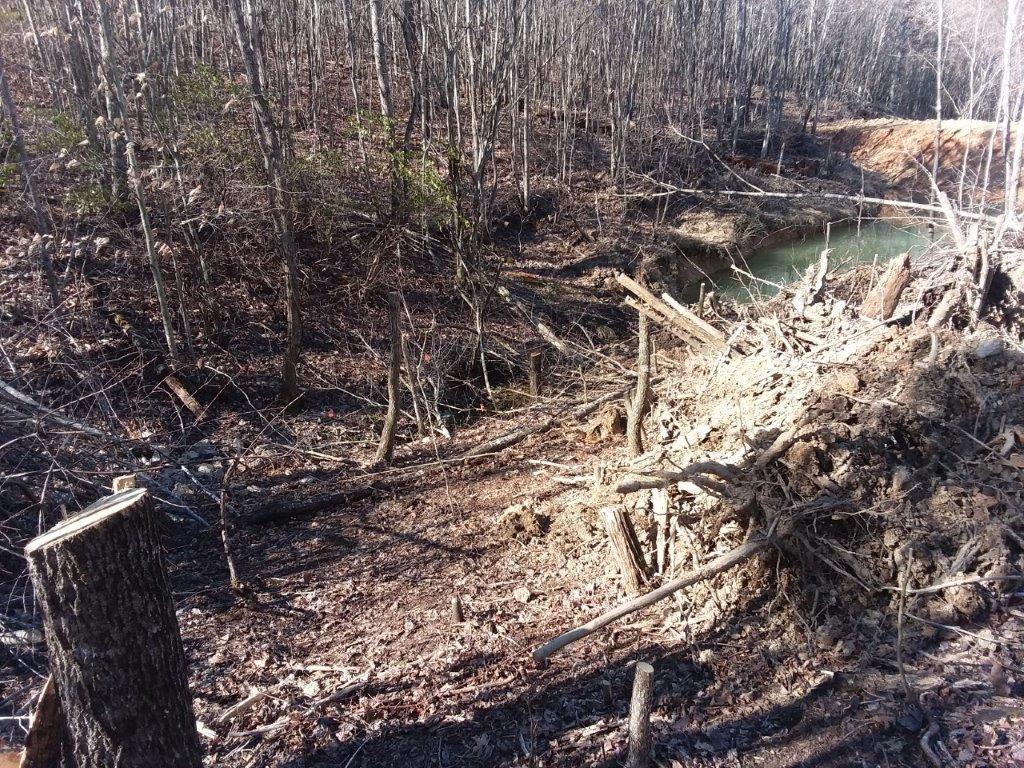
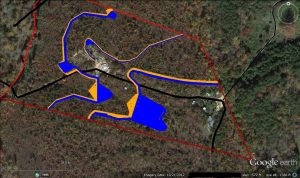
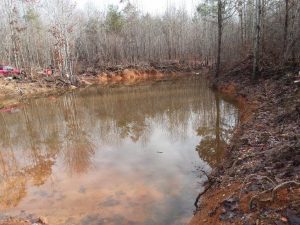
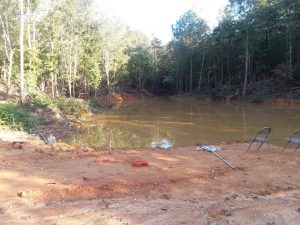 upper dam,
upper dam,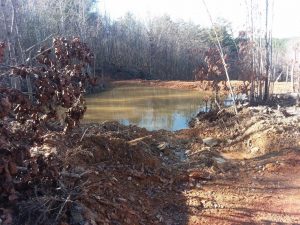
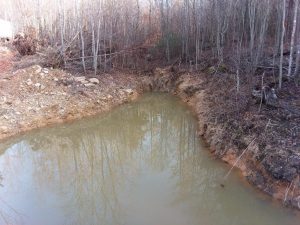 middle dam,
middle dam,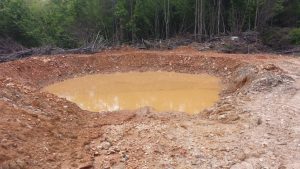 and contour pond. The pond just above the contour pond is really just a hole in the ground that doesn’t hold water, and i call it somewhat optimistically the ridge point pond. The very top pond is a potential gully dam , that may never actually be completed since it overlaps the property line and would require a joint cooperation .
and contour pond. The pond just above the contour pond is really just a hole in the ground that doesn’t hold water, and i call it somewhat optimistically the ridge point pond. The very top pond is a potential gully dam , that may never actually be completed since it overlaps the property line and would require a joint cooperation .